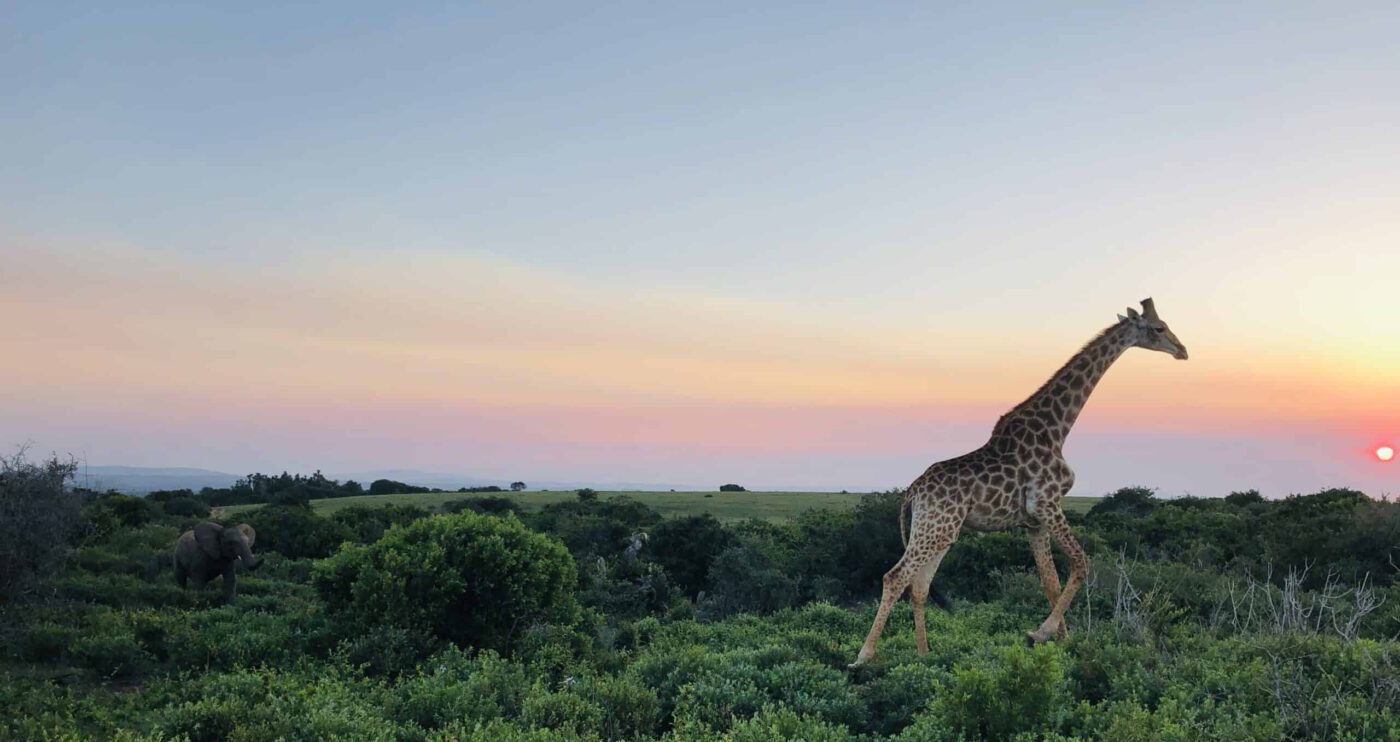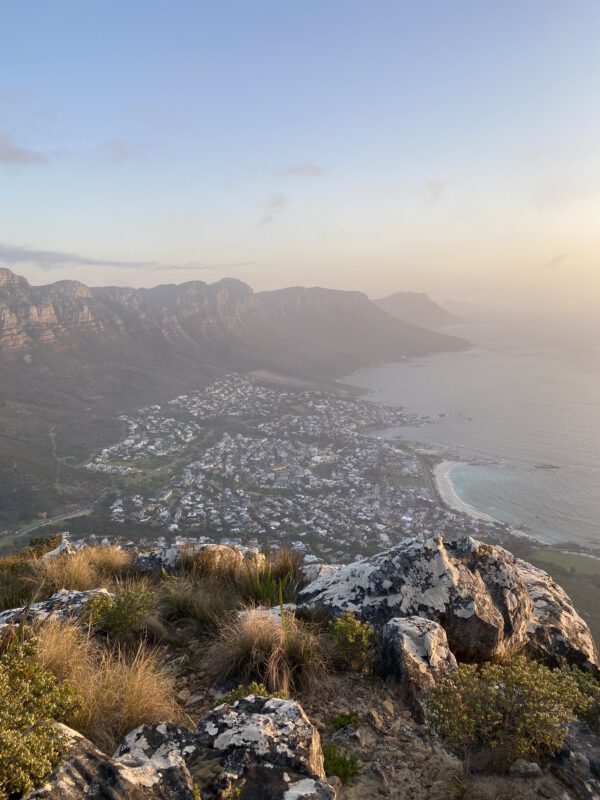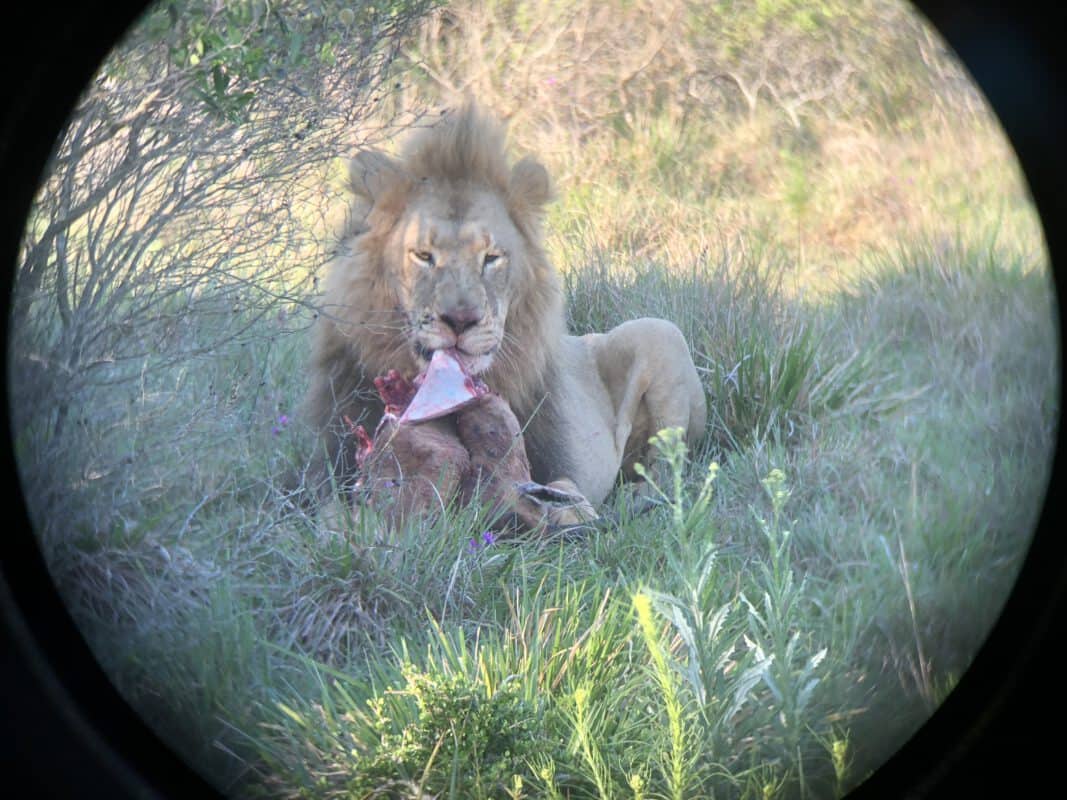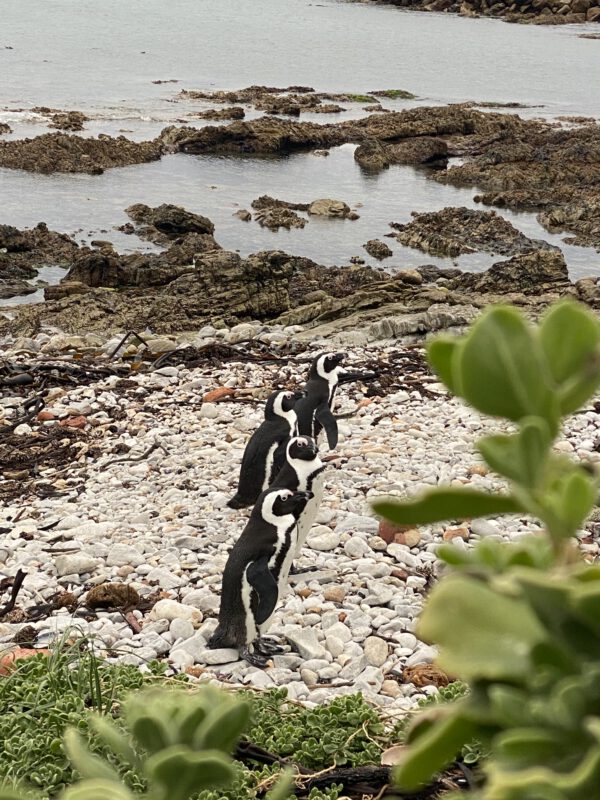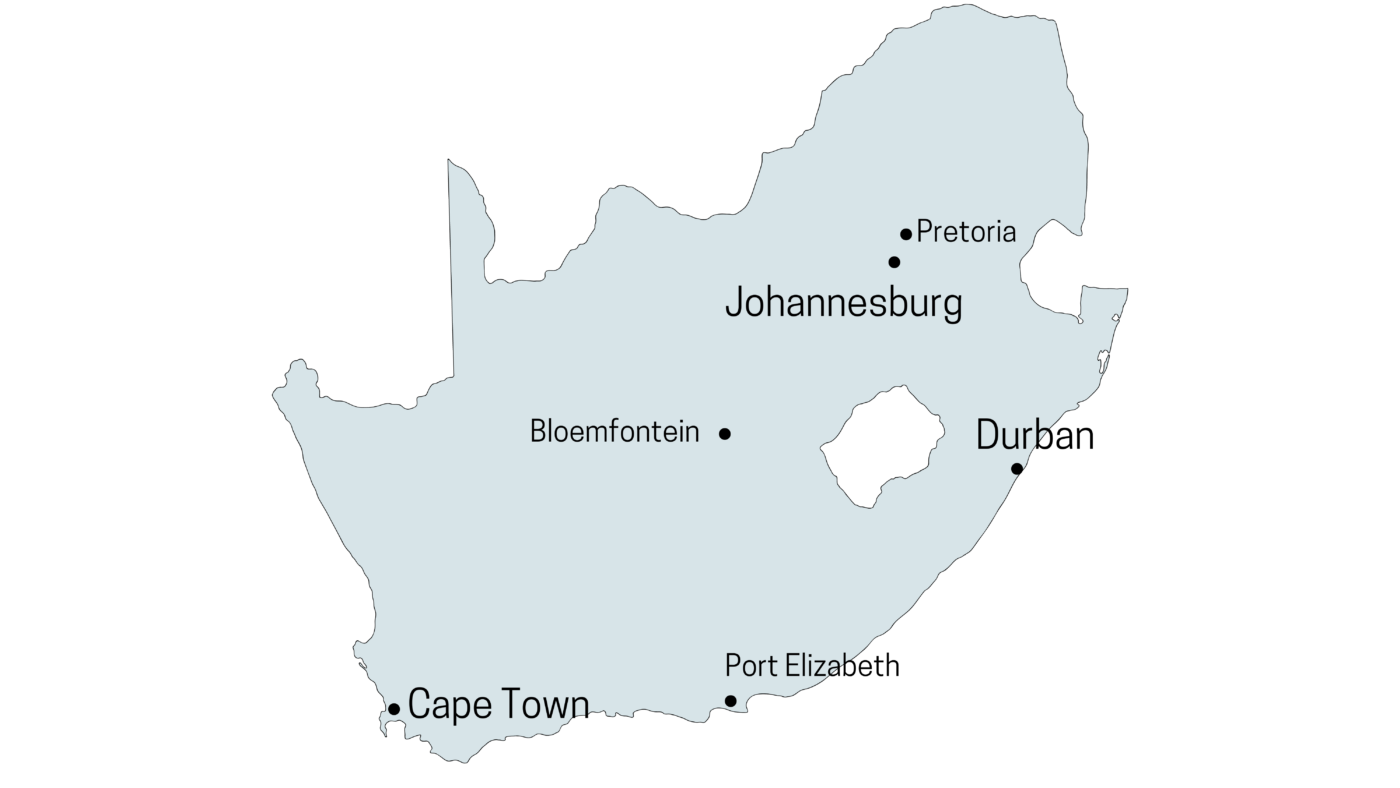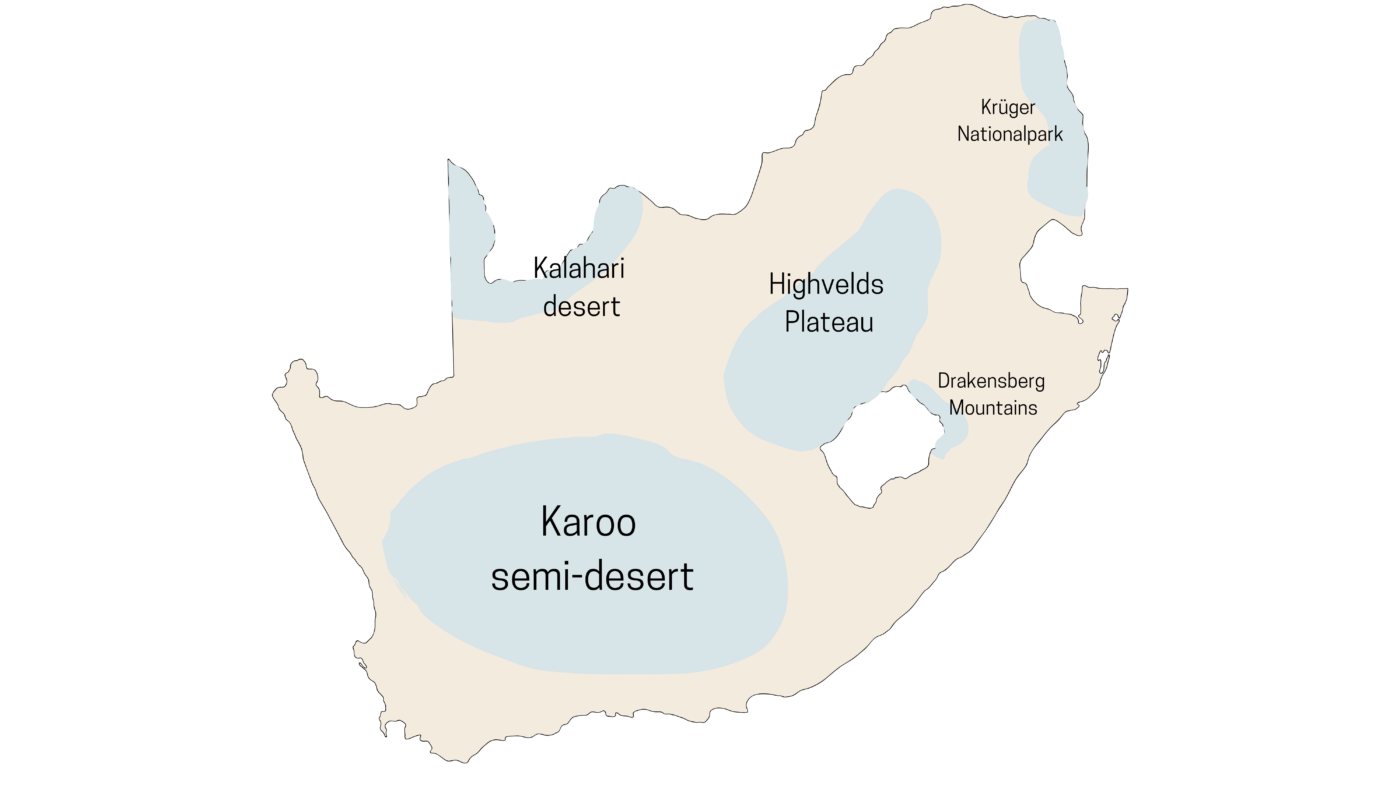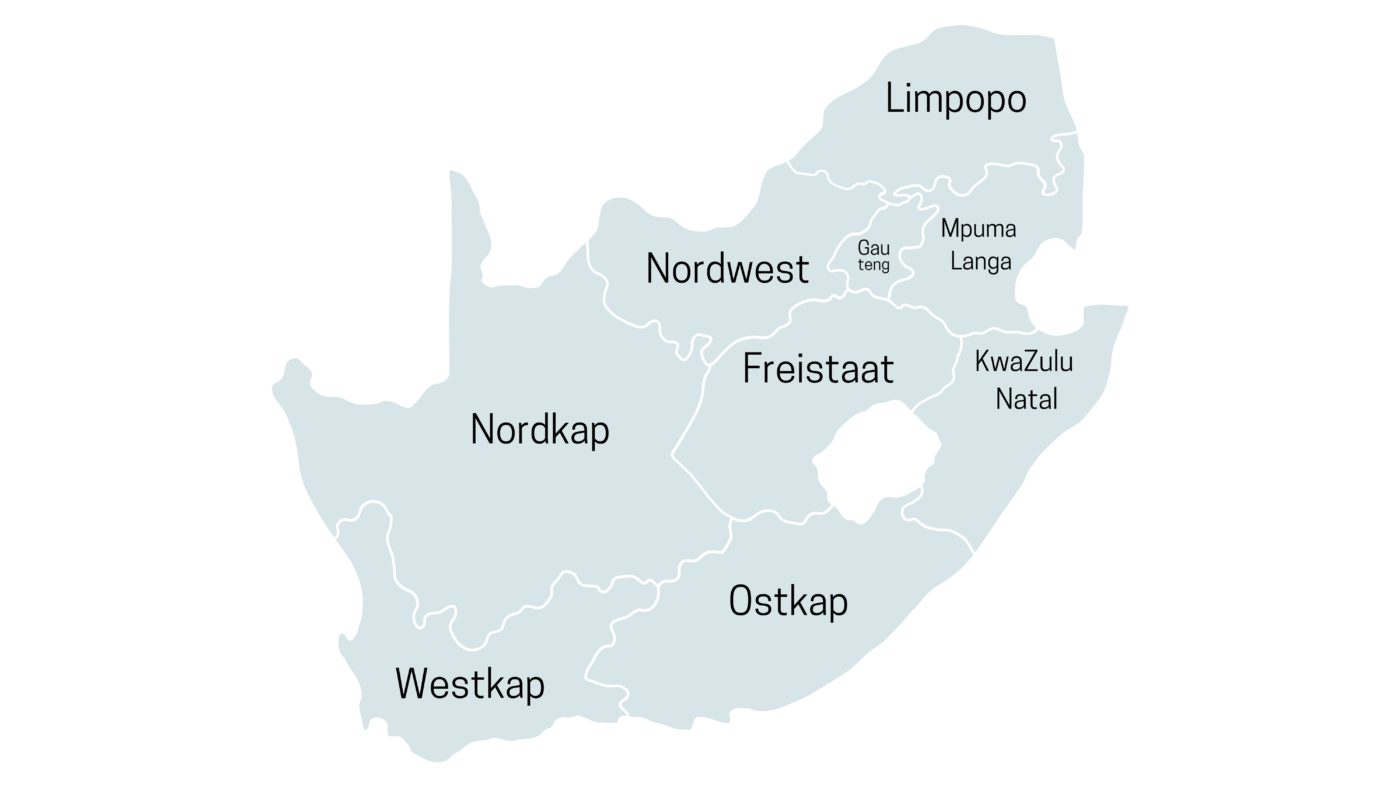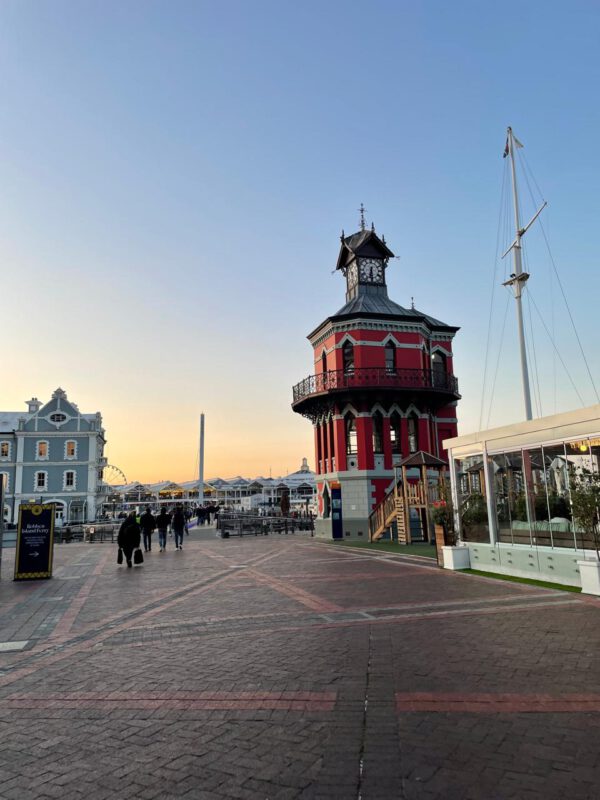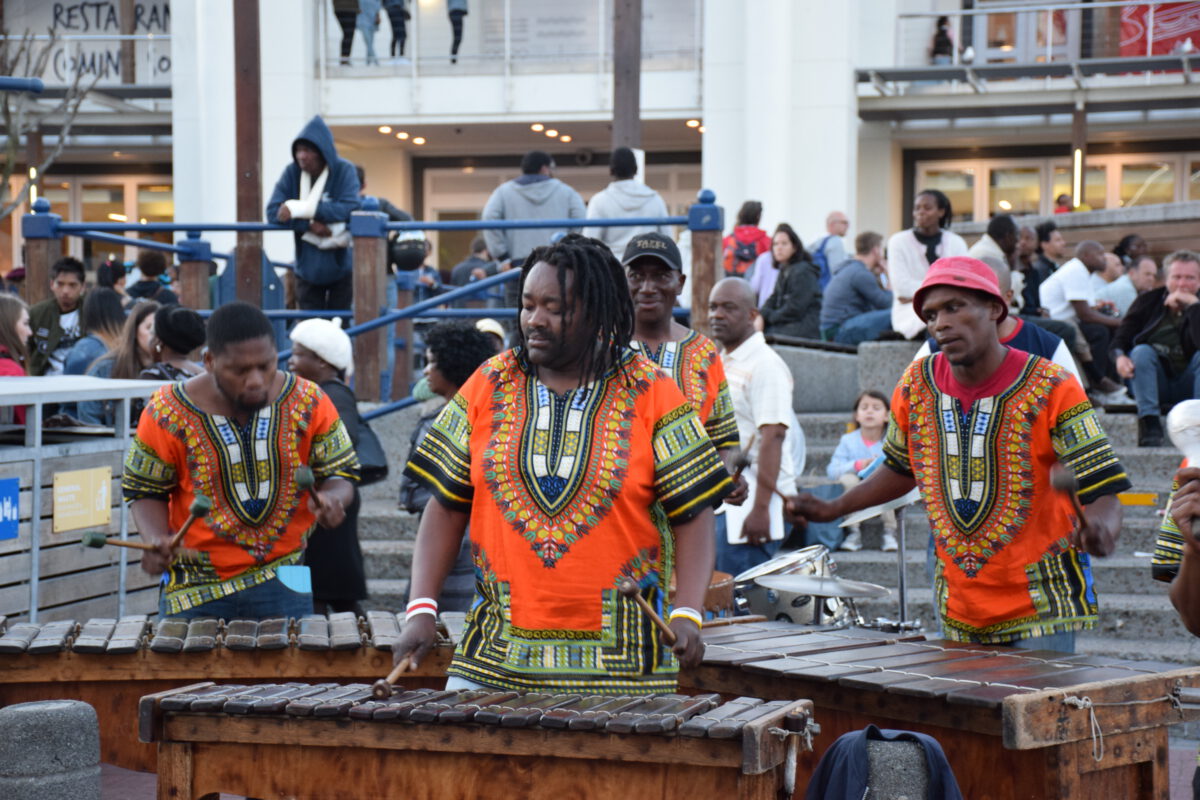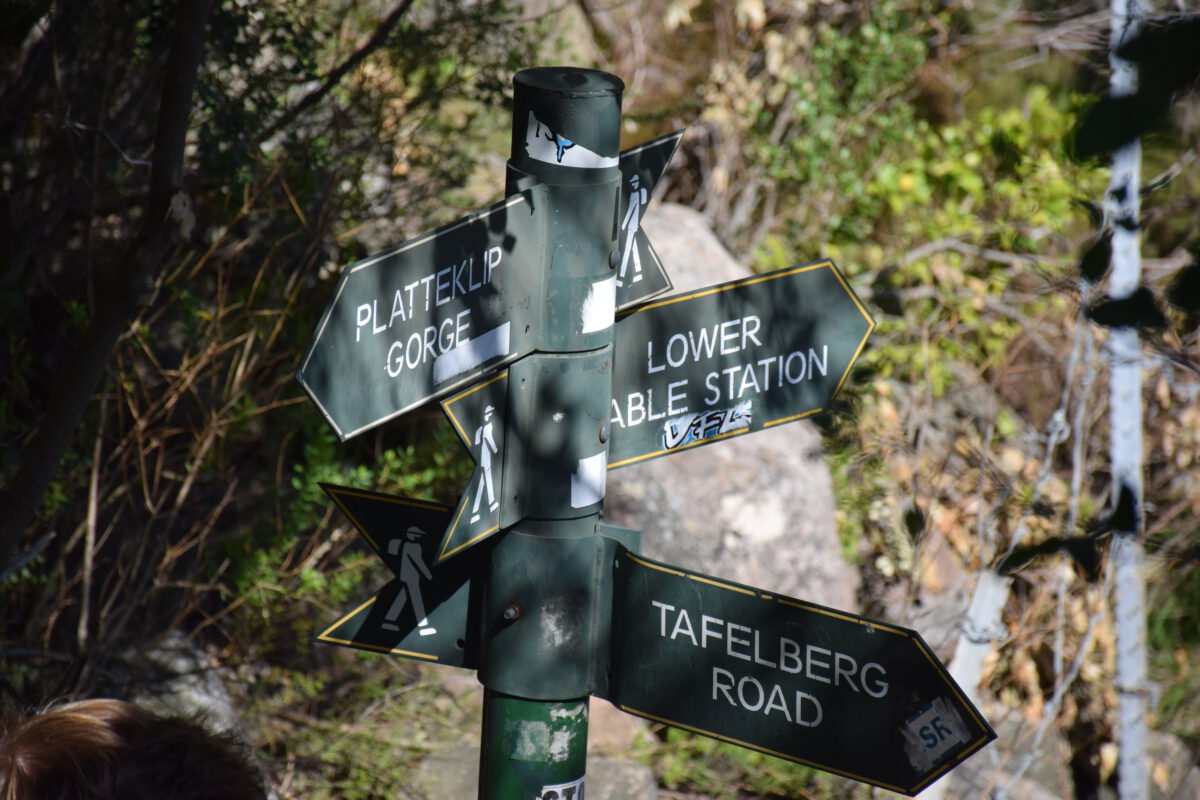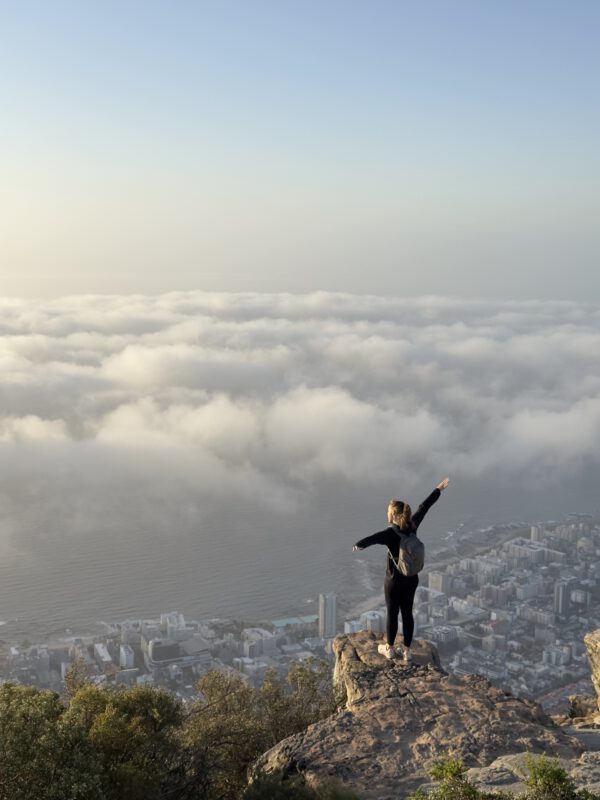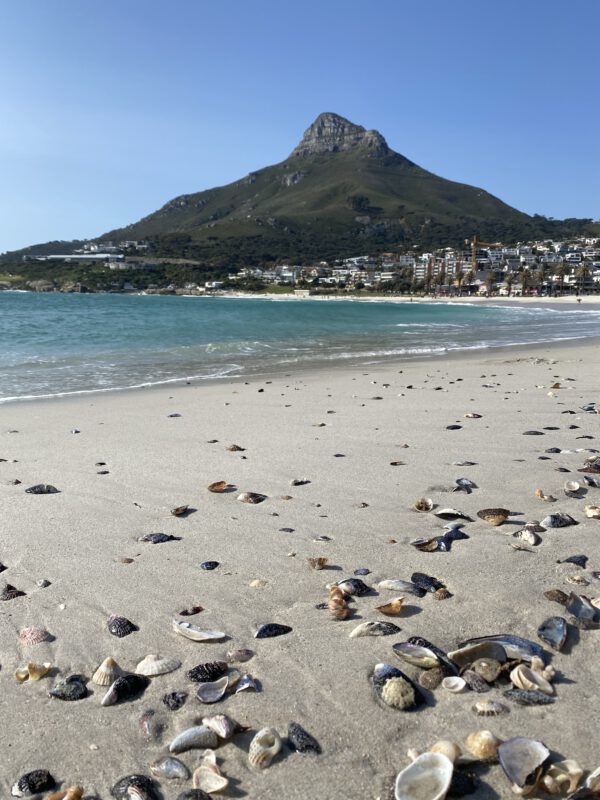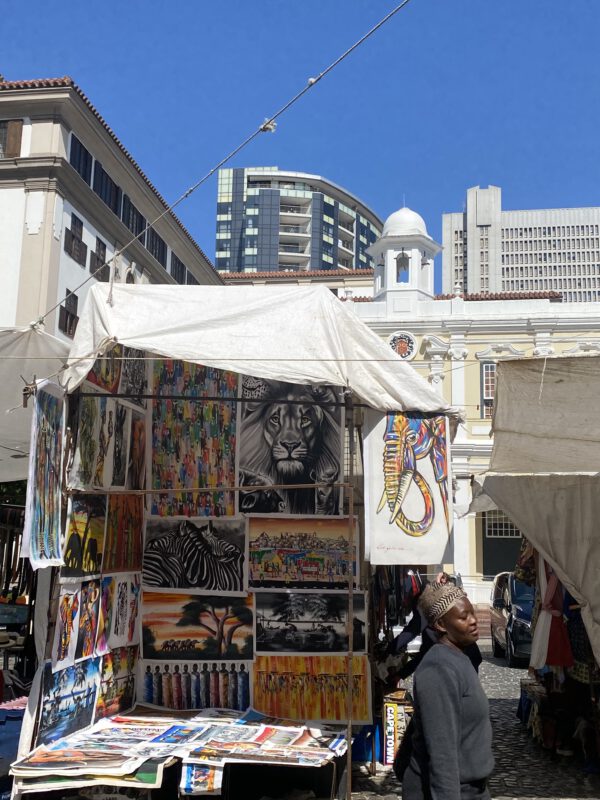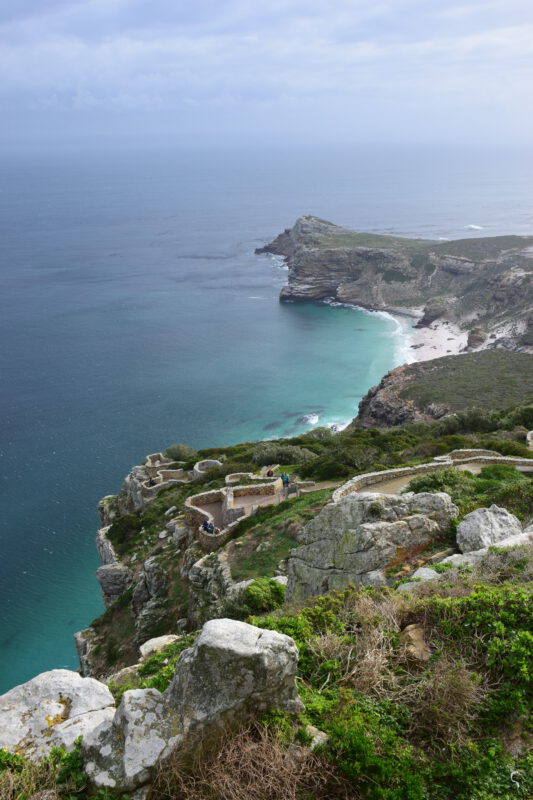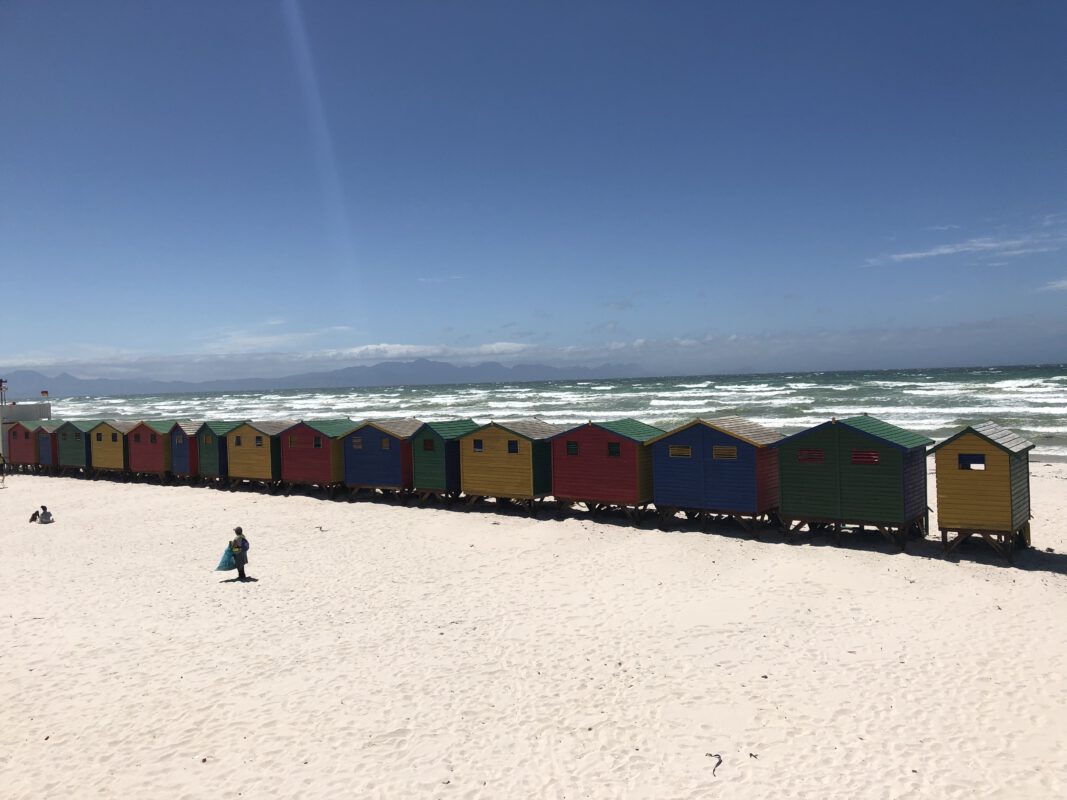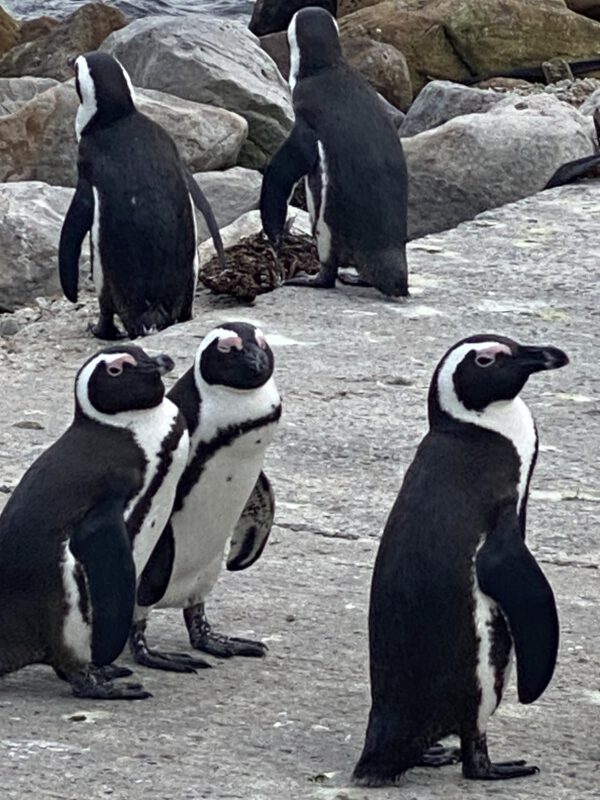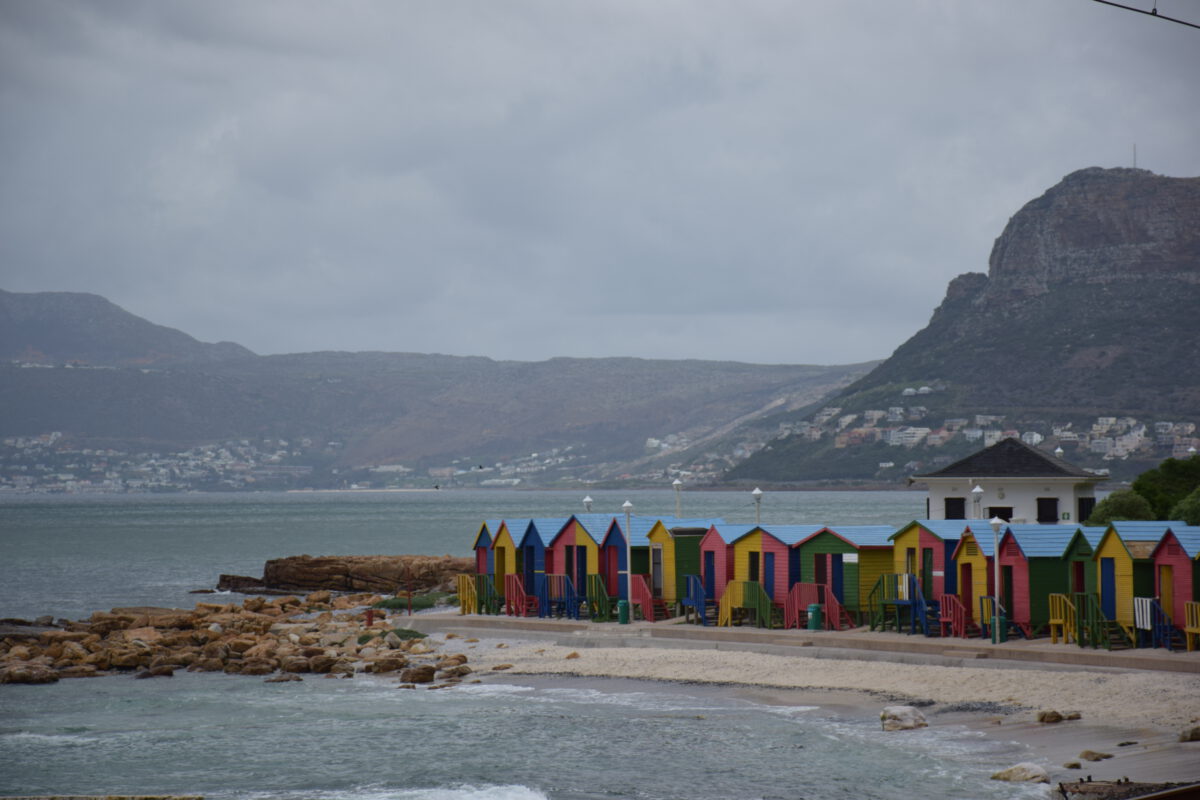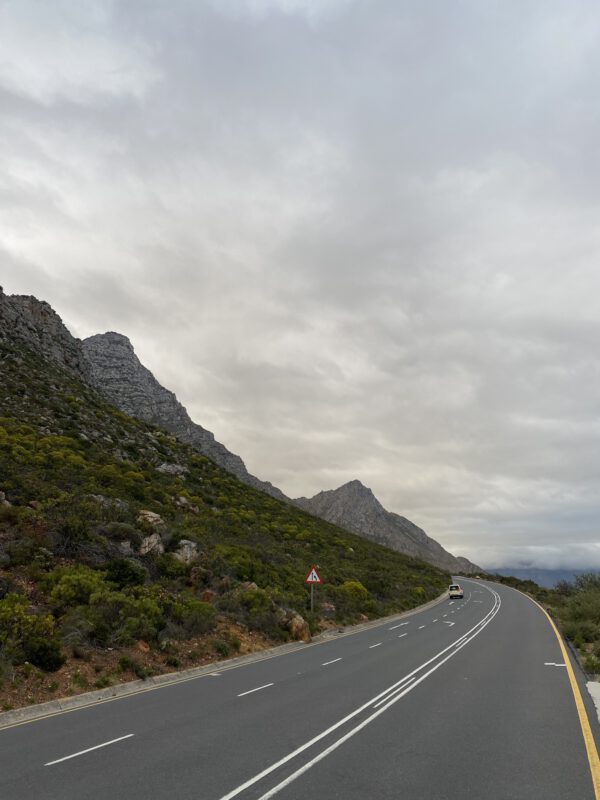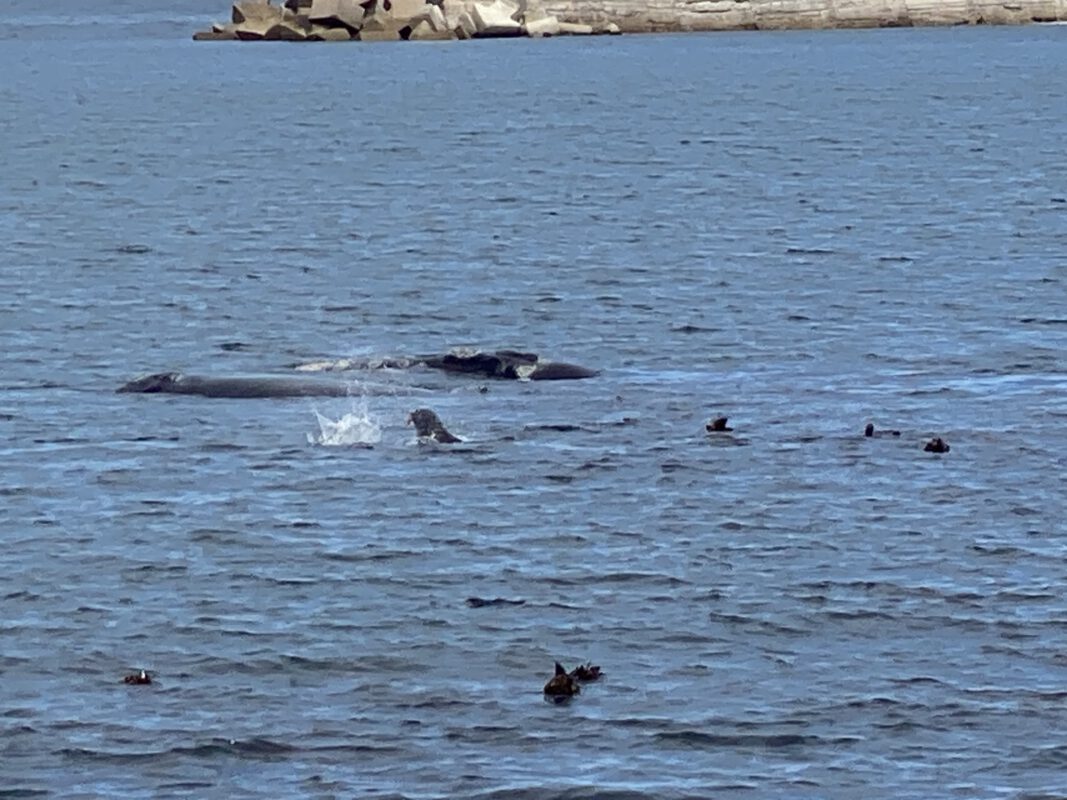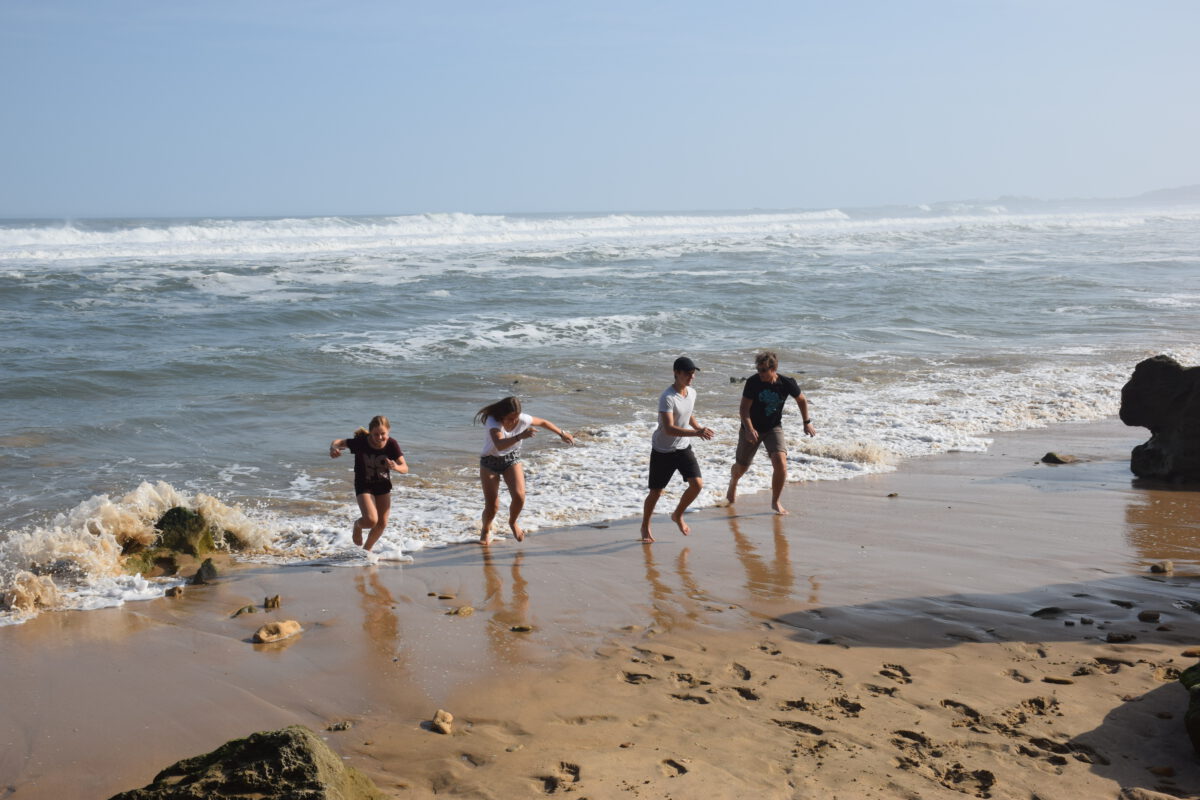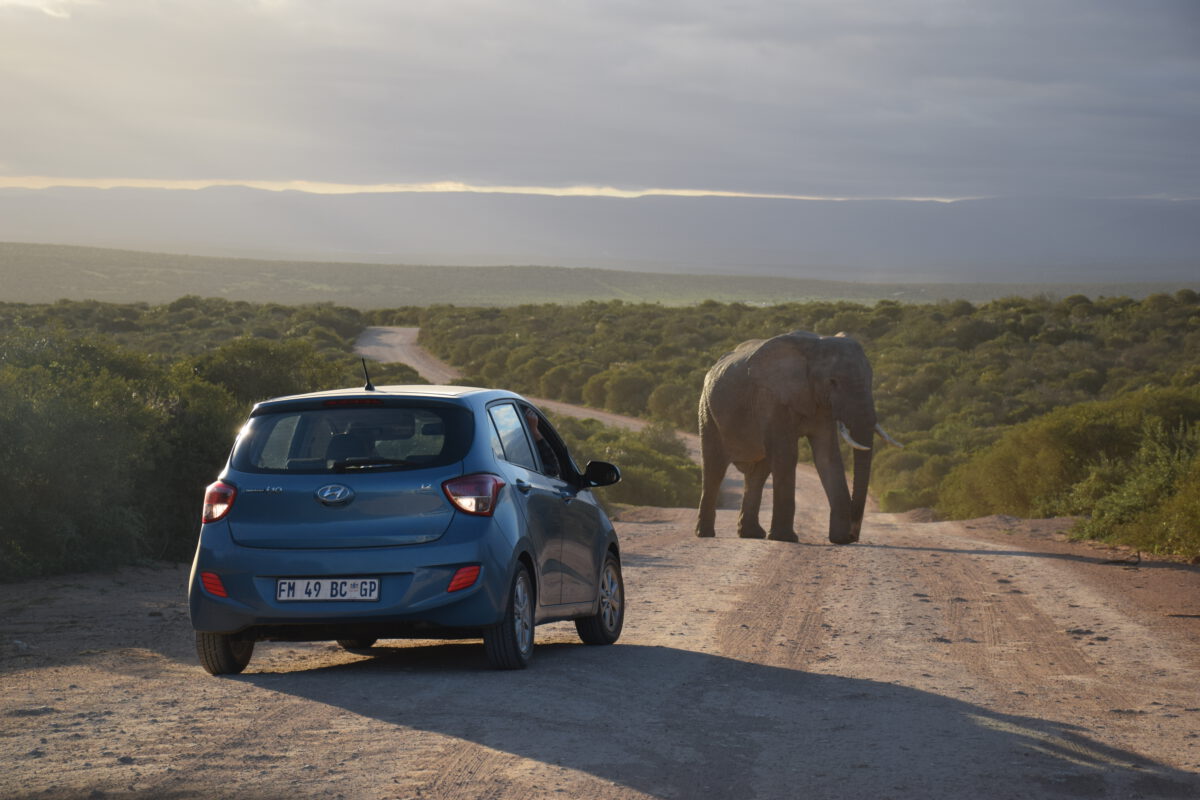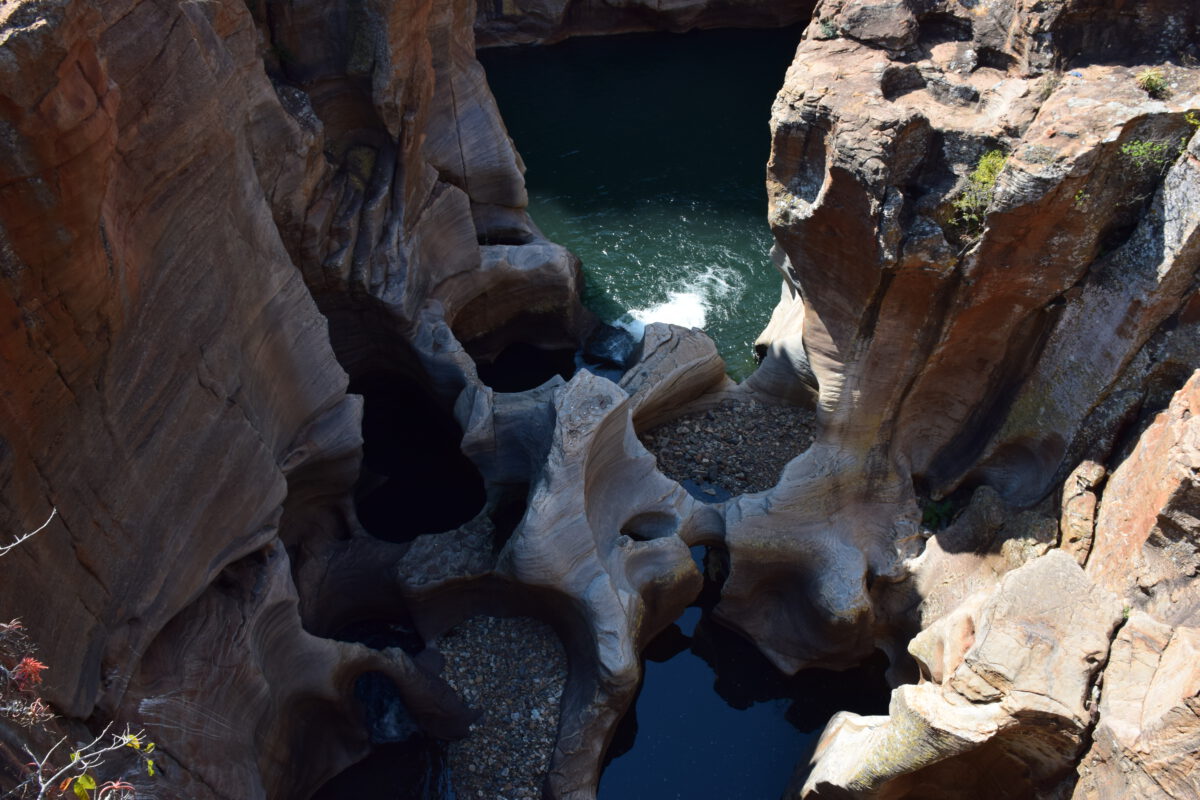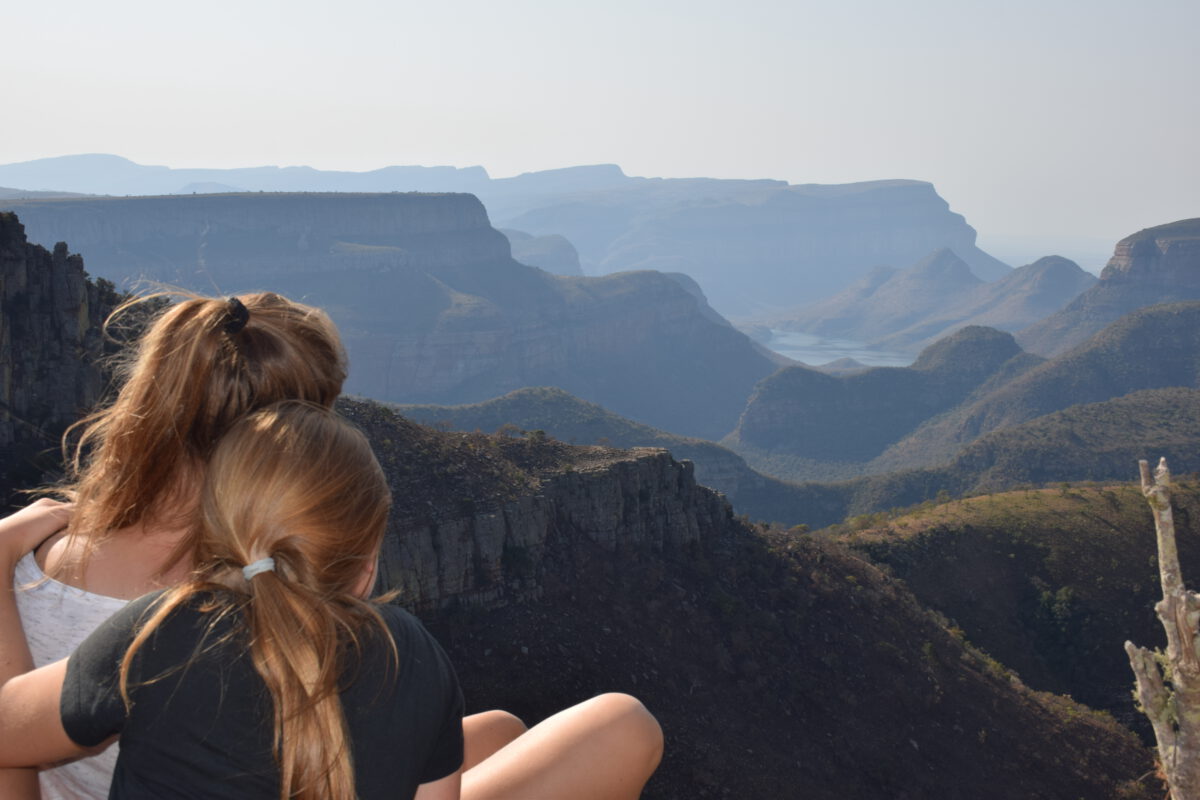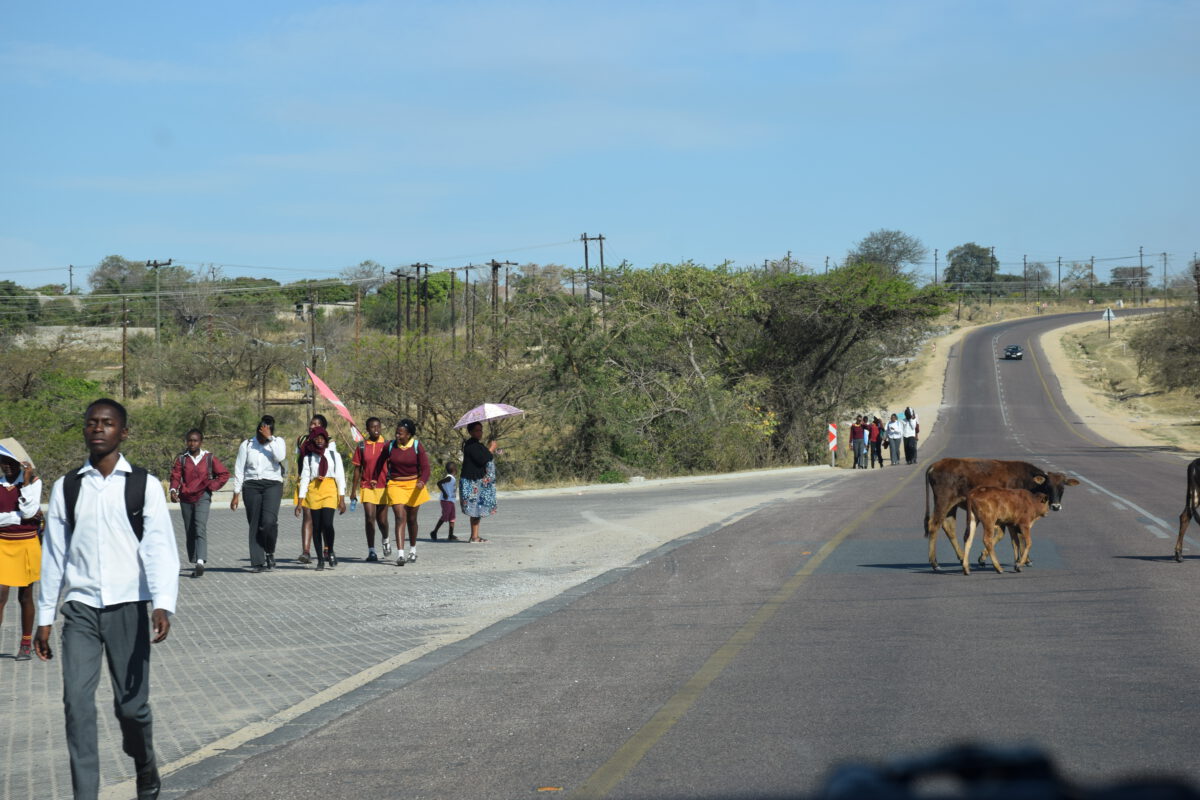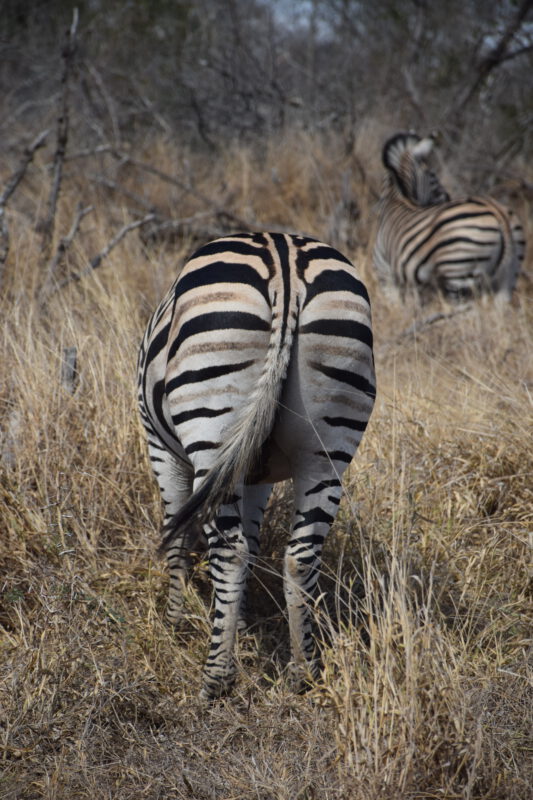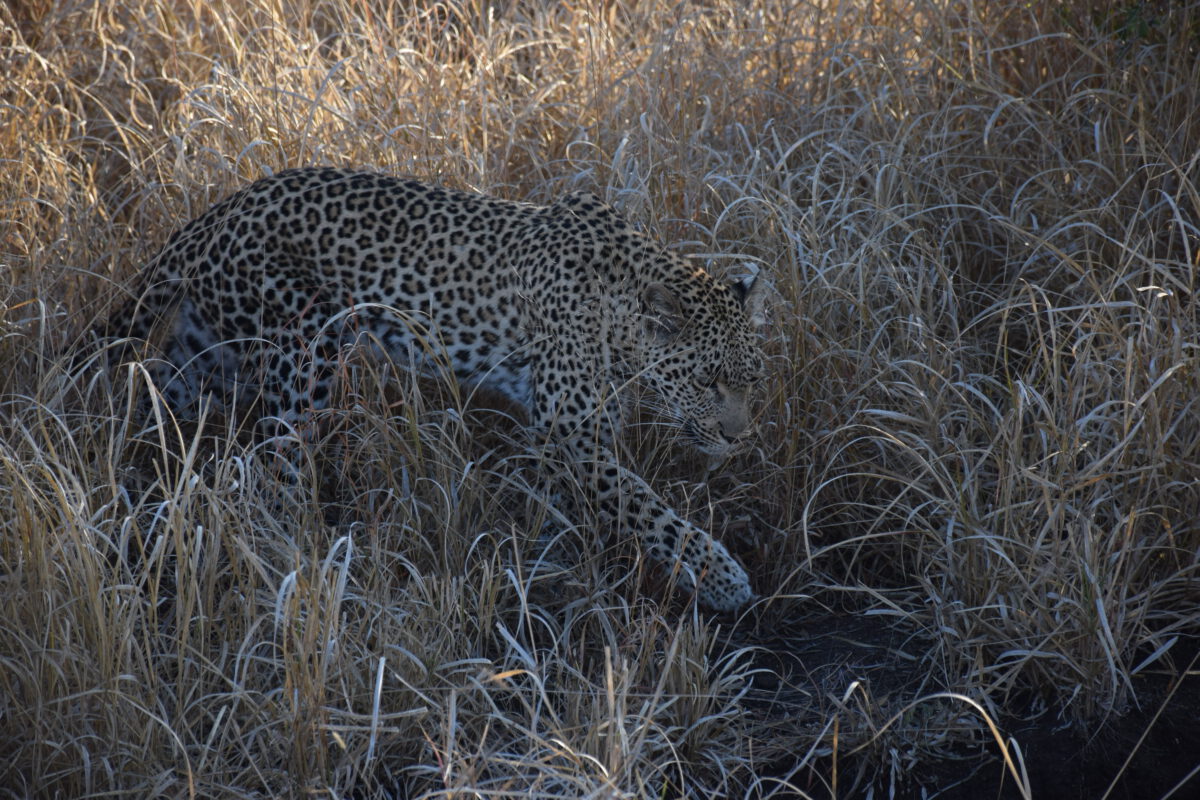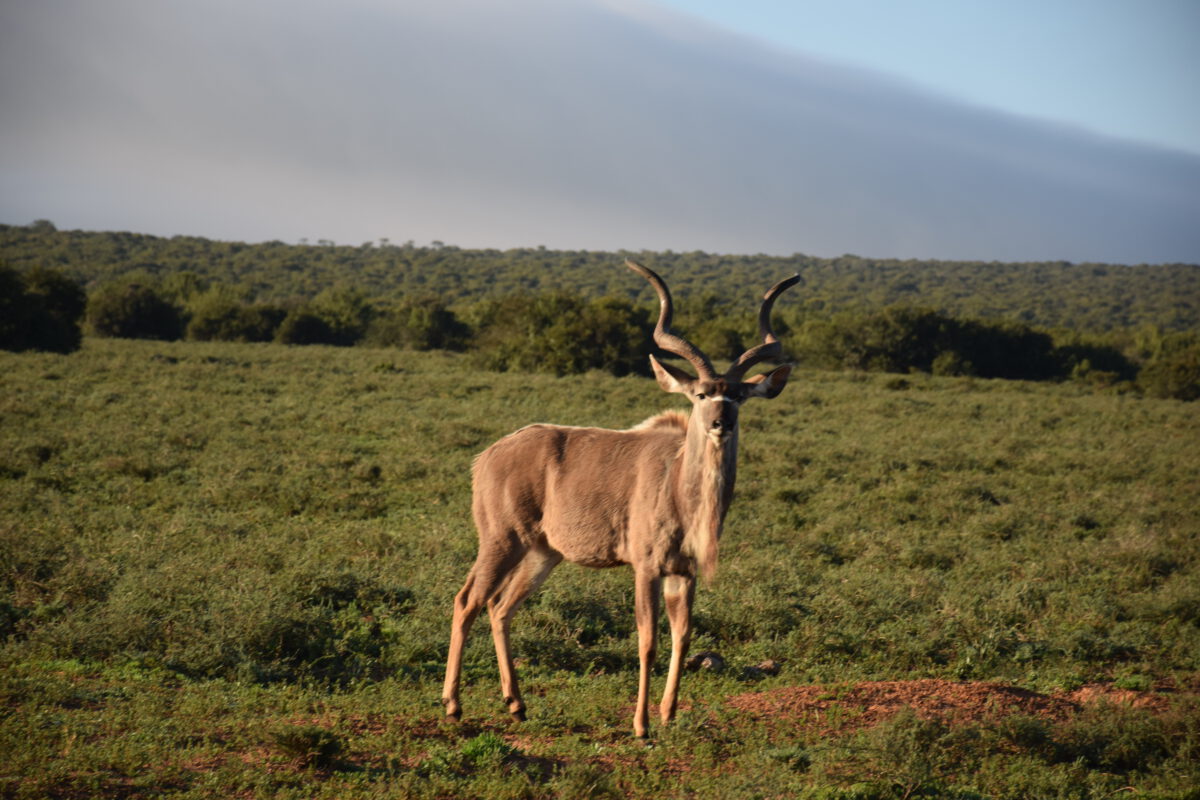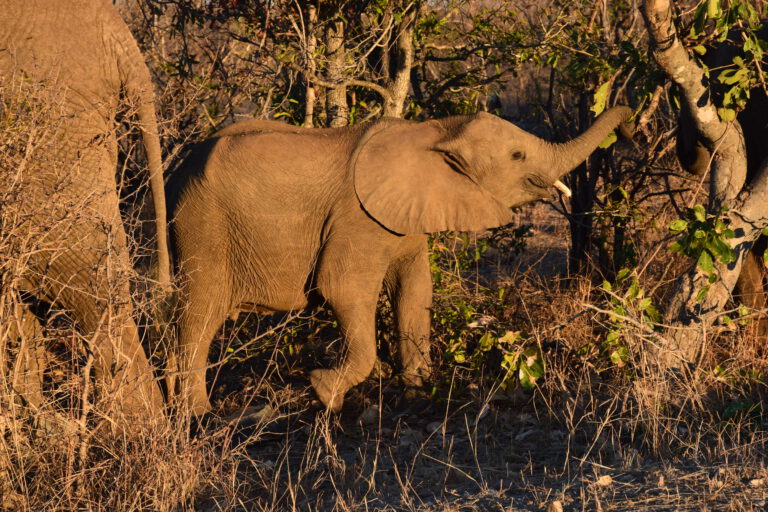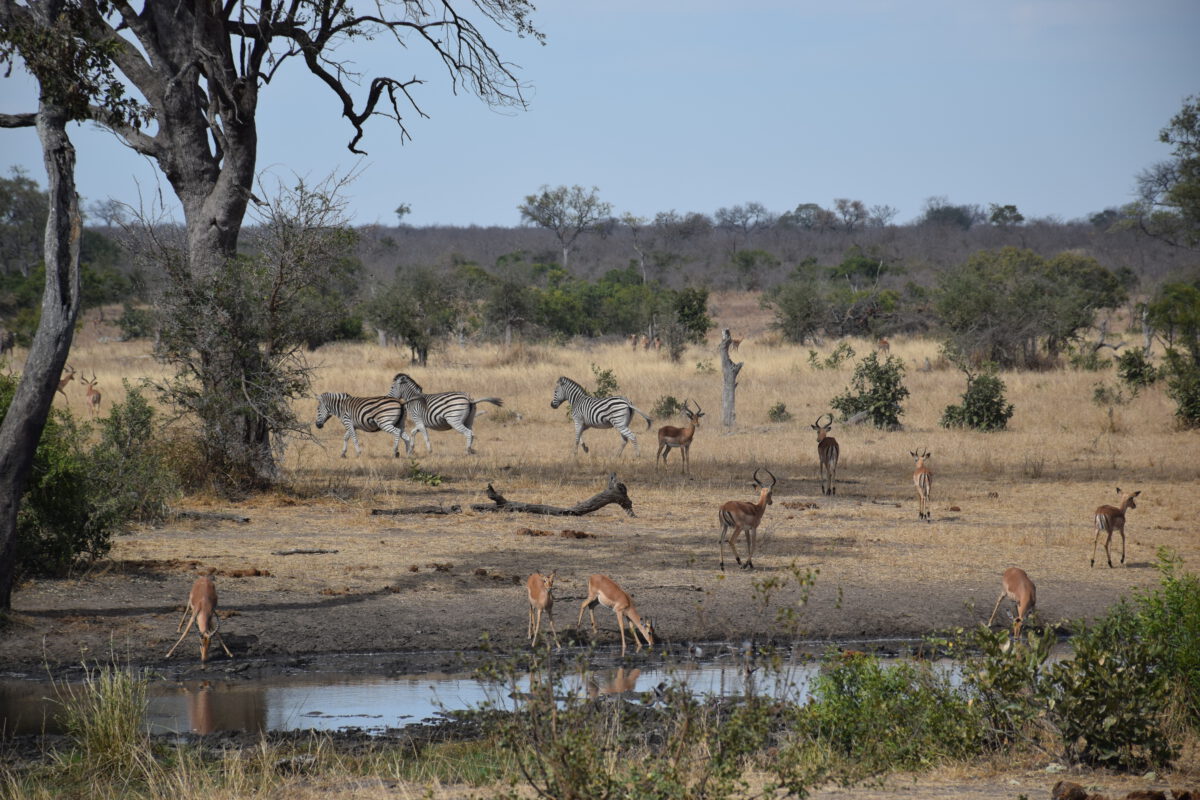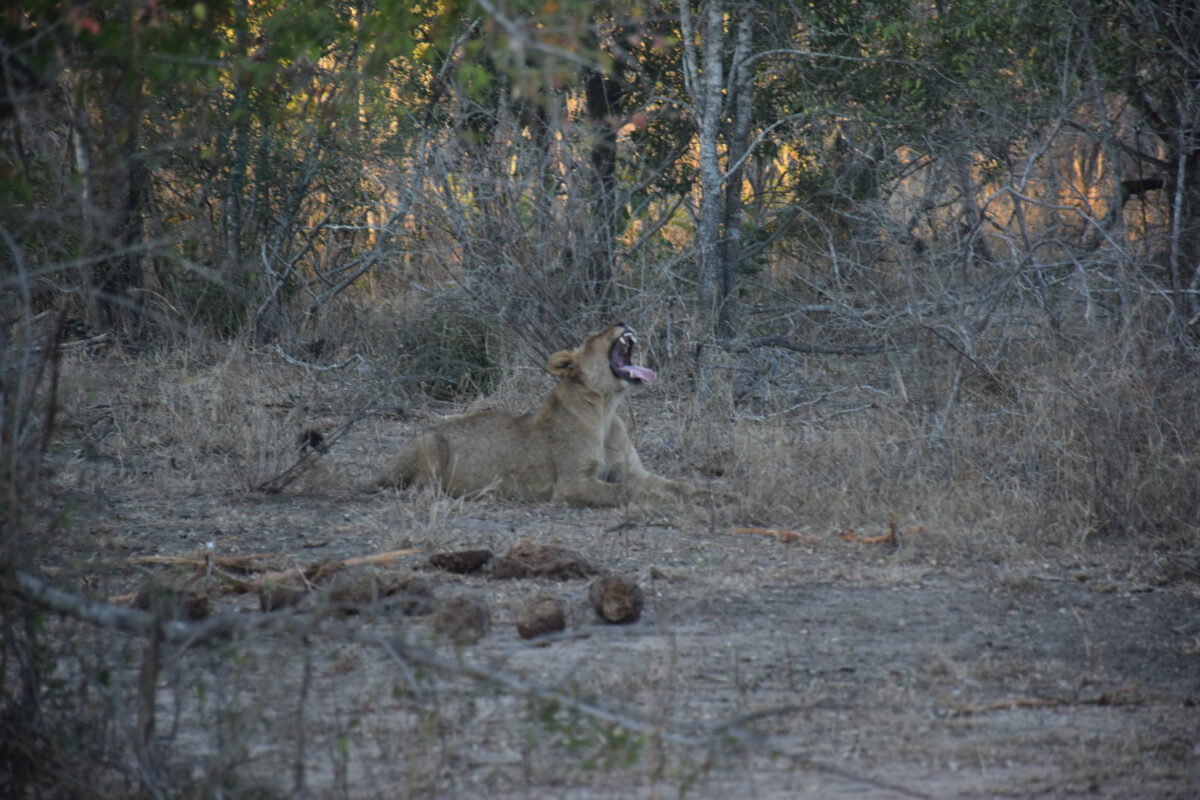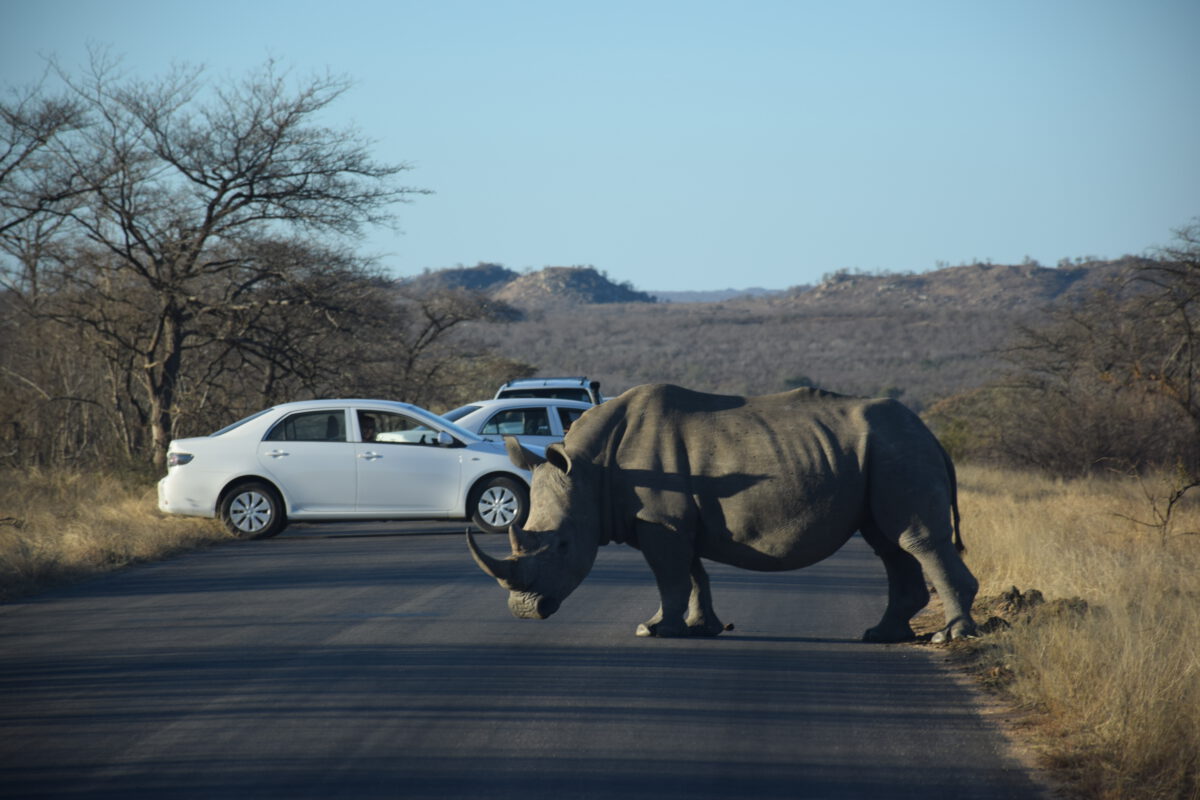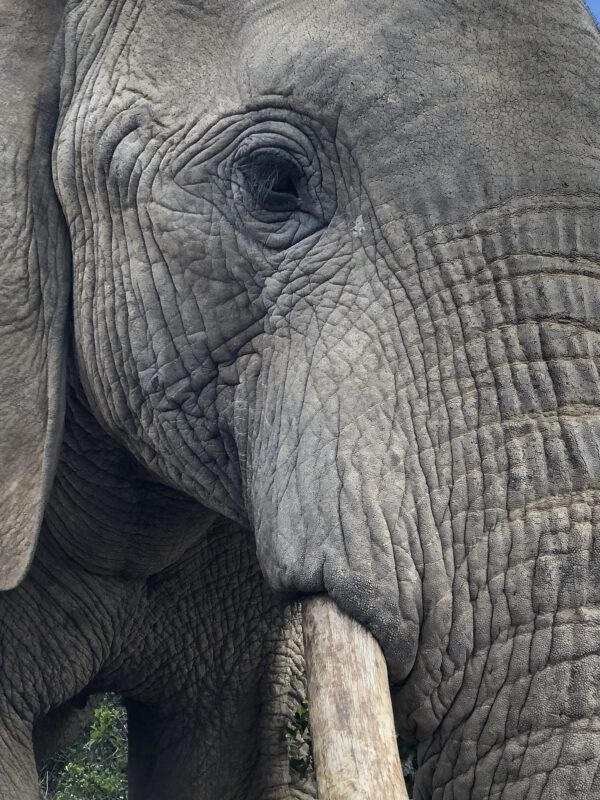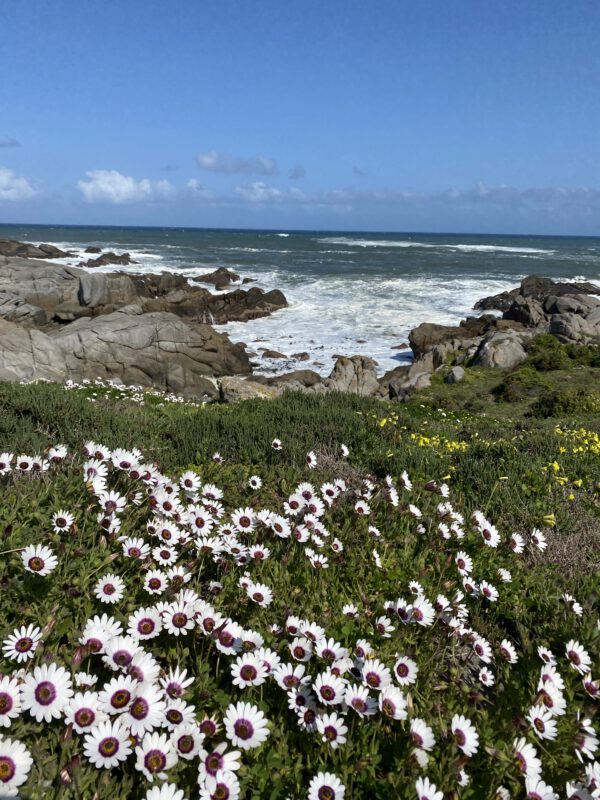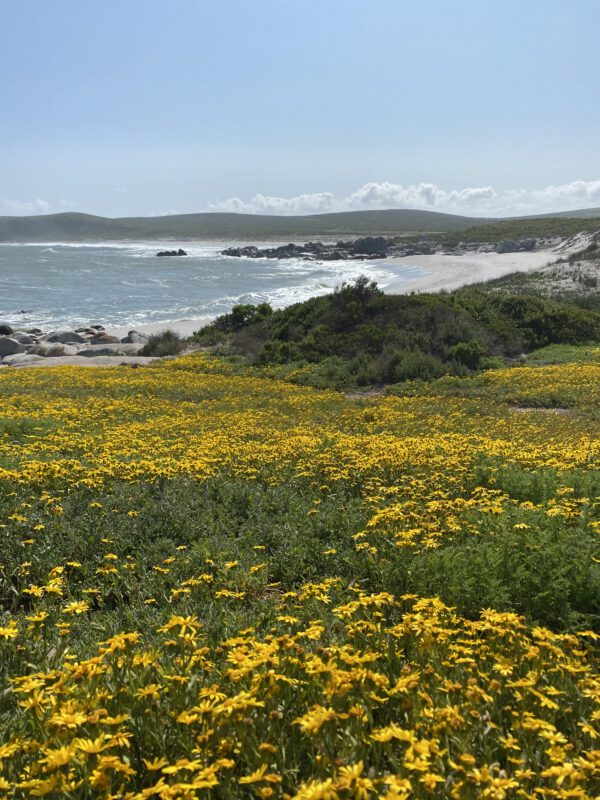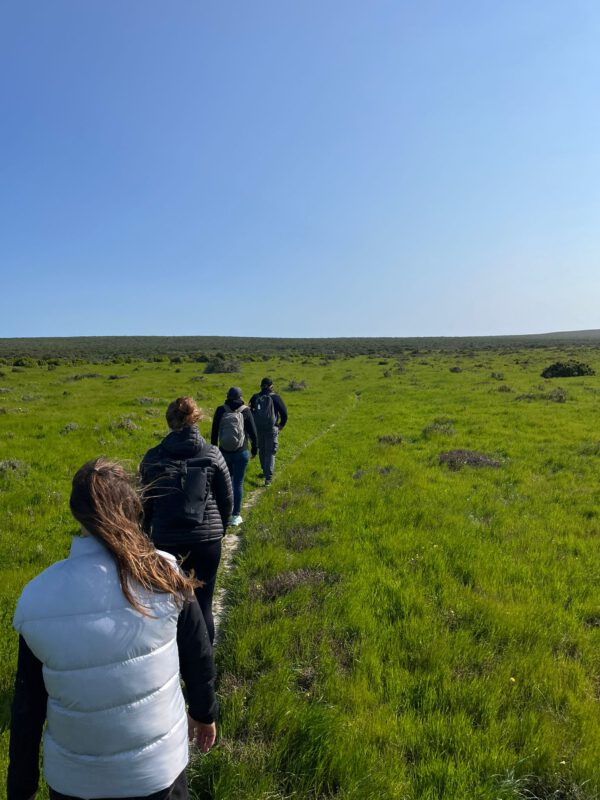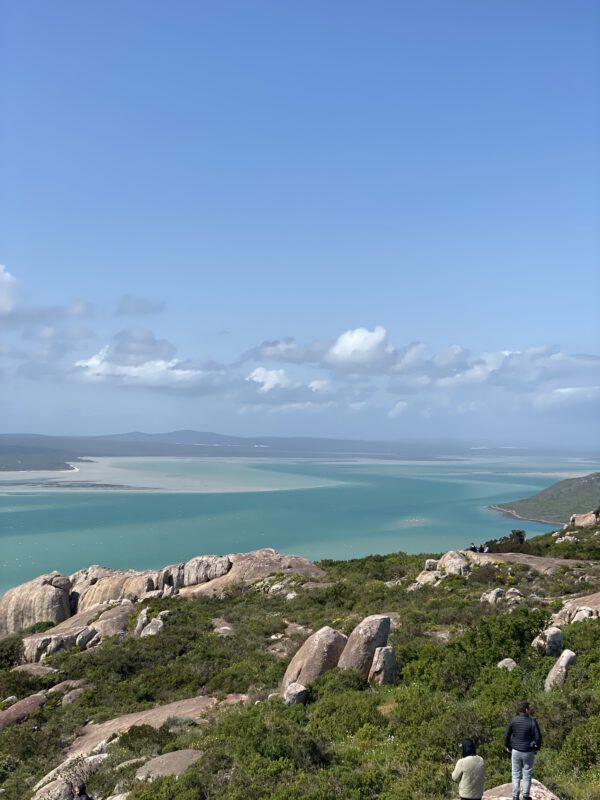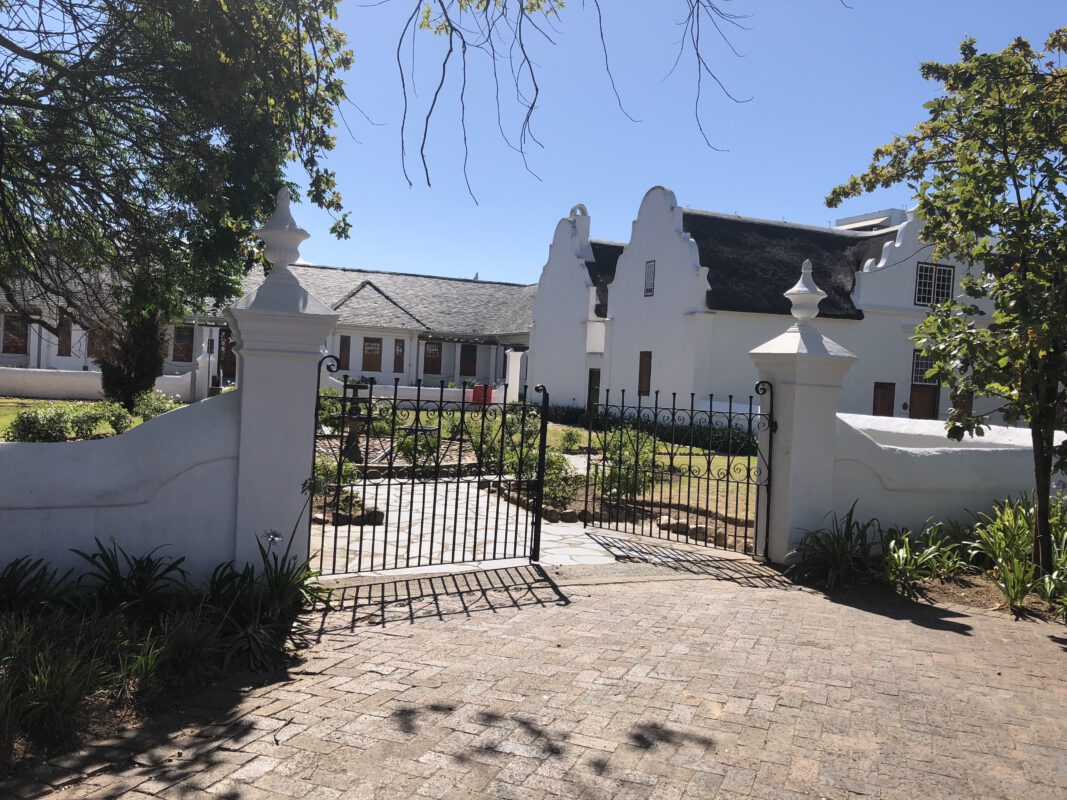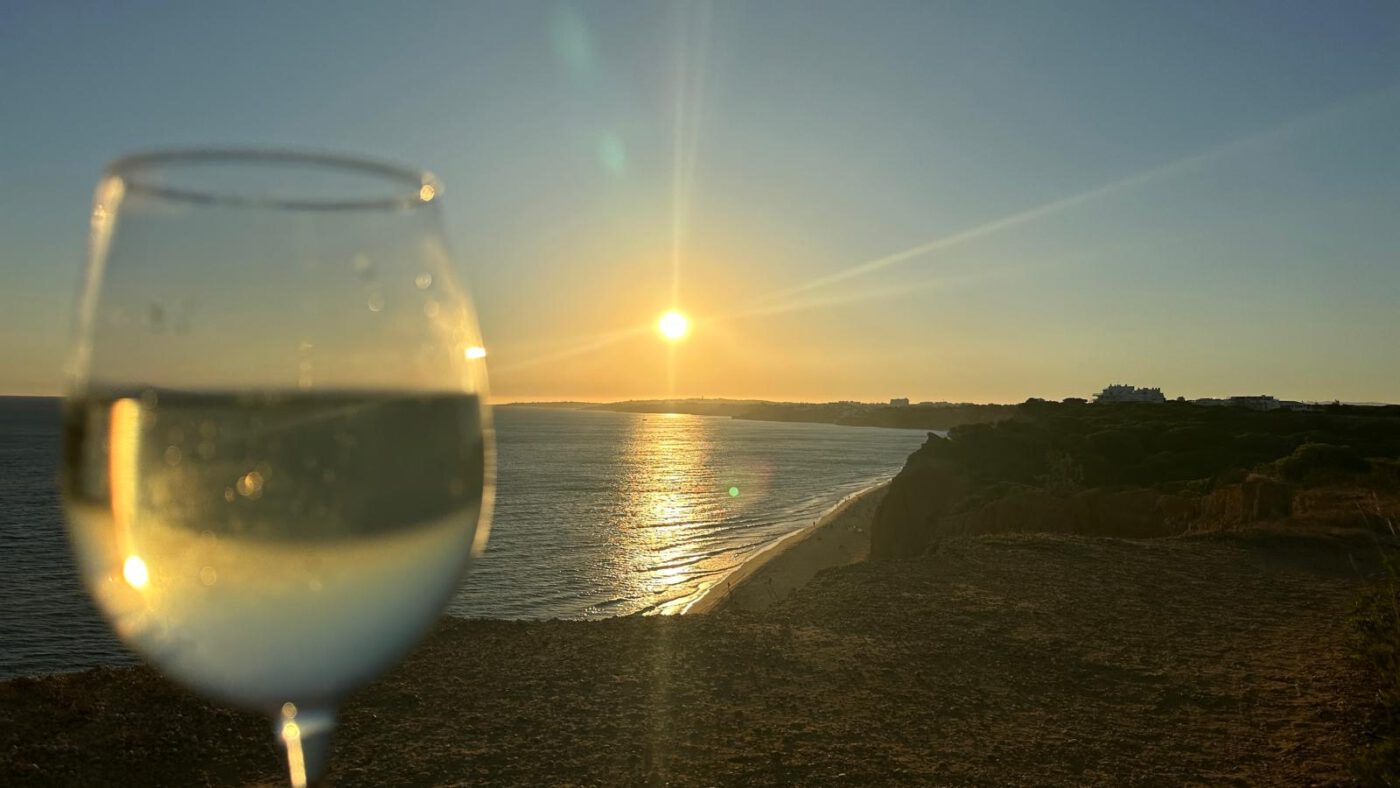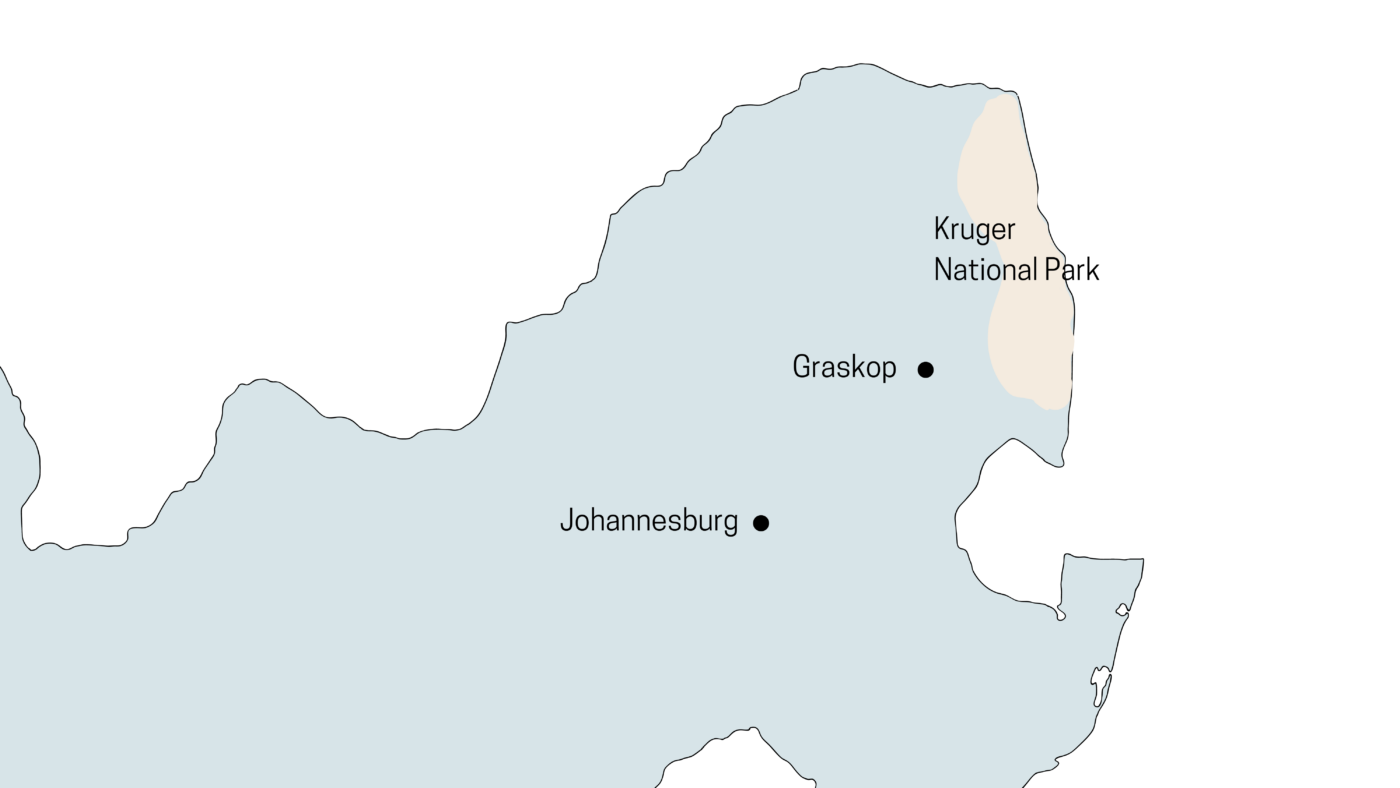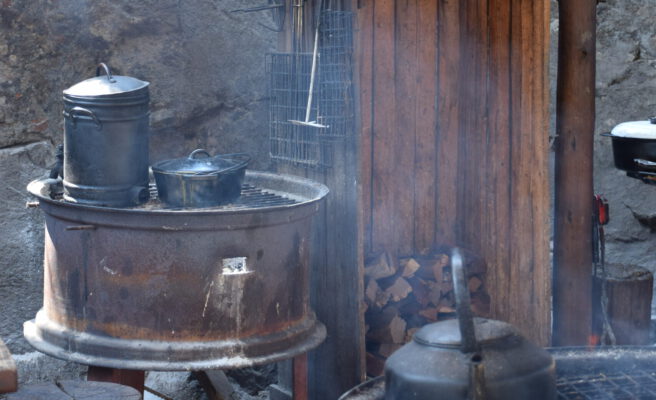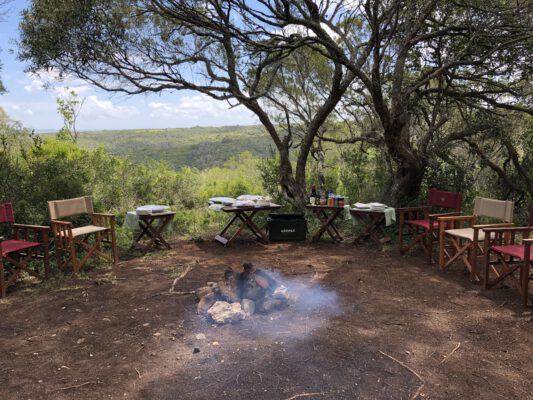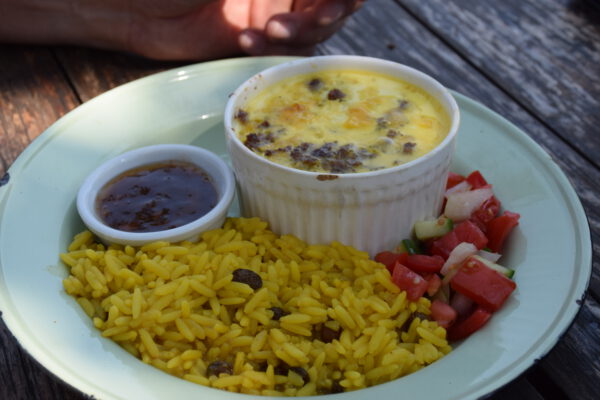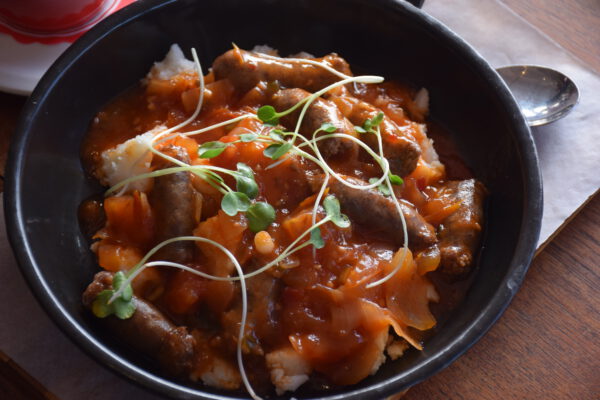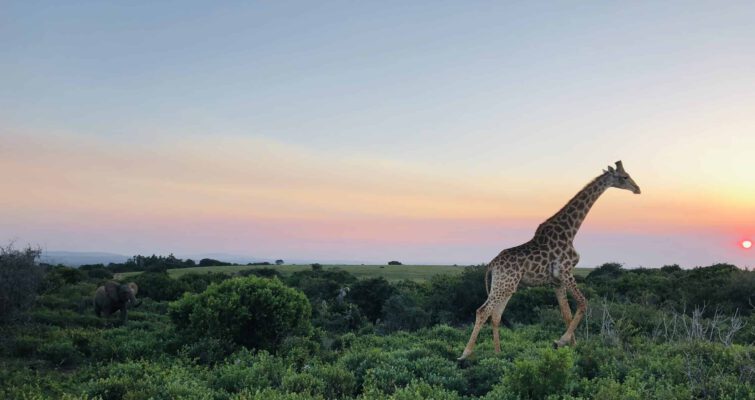South Africa – The ultimate travel Guide
I’ve been to South Africa three times, and this country never fails to amaze me! Even though it’s not the typical backpacking destination, South Africa has so much to offer: breathtaking landscapes, incredible wildlife, and unforgettable adventures. To me, South Africa embodies the diversity of the continent: majestic mountains, endless coastlines, thrilling safaris, and vibrant cities. In this guide, I’ll share my highlights, the best routes, and plenty of reasons why South Africa should be on your travel list!
SOUTH AFRICA – KNOW BEFORE YOU GO
The seasons in South Africa are the opposite of those in Europe. Thus making it a perfect holiday destination during the winter months. However, depending on what you want to do, South Africa has something to offer year-round. If you’re interested in wildlife and safaris, the dry winter months from May to October are ideal. In these months animals are easier to spot around water sources. For beach lovers, the warm summer months from November to March are perfect. You can enjoy the coastline, especially around Cape Town and the Garden Route. Whale watching is best between June and November, with peak viewing in September and October. Whereas, the famous Namaqualand wildflowers bloom beautifully from August to September, offering a stunning natural spectacle.
IN SUMMARY
For safaris: May to October
For beaches and coastal areas: November to March
For whale watching: June to November
For wildflowers: August to September
Visa
Citizens of many countries, including the United States, United Kingdom, most EU countries, Canada, and Australia, can enter South Africa for up to 90 days without a visa. If you’re not from a visa-exempt country, you’ll need to apply for a tourist visa in advance. Check the website of the South African embassy or consulate in your country.
Vaccinations
When traveling to South Africa, make sure your routine vaccinations (MMR, DTP, polio, and flu) are up-to-date. Recommended vaccines include Hepatitis A, Hepatitis B, and Typhoid, especially if you’ll be in rural areas or have close contact with locals. Tetanus should also be current, and consider Rabies vaccination if you’ll be in contact with animals. Malaria prevention is advised for some areas, e.g., in parts of Kruger National Park. And a Yellow Fever vaccination is required if you’re coming from a yellow fever-endemic country. Always consult a healthcare provider for tailored advice.
Flights
To get to South Africa, most travelers will fly into major international airports such as Johannesburg’s OR Tambo International, Cape Town International, or Durban’s King Shaka International. Direct flights are available from major cities worldwide, including London, New York, and Frankfurt.
Local Transportation
Renting a car or campervan is a popular choice in South Africa. It offers the flexibility to explore cities, towns, and national parks at your own pace. Moreover, roads in South Africa are well-maintained and driving is on the left side. Be prepared for some long drives, especially if traveling between cities or regions.
For long distances, such as traveling between Johannesburg, Cape Town, and Durban, domestic flights are efficient and time-saving. But also Intercity buses like Greyhound, Intercape, and Baz Bus offer routes between major cities and towns. They can be a cost-effective option but may be less flexible. Train travel is available on routes such as the scenic Blue Train or Shosholoza Meyl for intercity travel. However, train services can be less frequent and less reliable compared to other options (I have never tried them).
In cities, ride-sharing apps like Uber are widely available. Ride-sharing is generally considered safer and more reliable than traditional taxis. For short distances and depending on the urban area, walking is also a viable opportunity in South Africa.
In South Africa, the currency is the South African Rand (ZAR), symbolized as R. As of recent exchange rates, 1 Euro is approximately 22 Rand, and 1 US Dollar is about 20 Rand. These rates can fluctuate, so it’s a good idea to check the latest exchange rates before traveling. Currency can be exchanged at banks, airports, and exchange bureaus.
Credit and debit cards are commonly used and accepted in most hotels, restaurants, and shops. Though it’s advisable to carry some cash for smaller vendors or in more remote areas. Mobile payment options, such as SnapScan and Zapper, are also gaining popularity.
South Africa has a reputation for high crime rates, particularly in urban areas. While many parts of the country are safe for tourists, it’s essential to stay informed and take precautions. In major cities like Johannesburg, Cape Town, and Durban, certain areas should be avoided especially after dark. Travelers should remain aware of their surroundings at all times. It’s best to travel in groups, use registered transportation, and avoid displaying valuables. When driving, you’ll often see hitchhikers along the roads, but for safety reasons, it’s recommended not to pick anyone up. Additionally, it’s common for people from nearby townships to cross highways on foot. So, it’s crucial to drive cautiously and avoid speeding, especially near urban areas.
General advice:
- Stick to well-lit, busy areas, especially at night.
- Never go alone.
- Avoid carrying valuables in plain sight.
- Use registered transportation, like Uber.
- Always seek local advice on areas to avoid.
Despite these concerns, millions of tourists visit South Africa each year without incident. Personally, I have never experienced a situation I felt unsafe. Just stick to the few rules.
Traveling in South Africa can be surprisingly affordable, especially when compared to many Western countries. This affordability makes it an attractive destination for budget-conscious travelers looking to explore diverse landscapes and rich cultures without breaking the bank.
Accommodation options vary widely, catering to different budgets and preferences. You can find budget hostels starting at around 10€ to 25€ per night, perfect for backpackers or those looking to save. For travelers seeking a bit more comfort, mid-range hotels or guesthouses typically range from 40€ to 80€, offering amenities that ensure a pleasant stay. Additionally, there are plenty of unique options like guest farms or lodges that provide a taste of the local lifestyle.
Dining out is also budget-friendly, and I particularly loved indulging in traditional foods like biltong and chakalaka with pap. You can enjoy a hearty meal at a local eatery for around 5€ to 10€, making it easy to savor authentic South African flavors. Plus, South Africa is known for its excellent wines, which are surprisingly inexpensive; you can find good quality bottles starting at just 2,50€ to 5€.
For transportation, public buses and trains, like the Gautrain in Gauteng, provide economical options, often costing less than 10€ for a trip. This is a great way to navigate urban areas. Renting a car can range from 15€ to 40€ per day, depending on the vehicle type. This allows for more flexibility in exploring remote areas and hidden gems along the coast or in the countryside.
Activities in South Africa are reasonably priced too. National park entrance fees are quite affordable, with Kruger National Park charging about 20€ per person for a day visit. Attractions like Table Mountain, which offers stunning views of Cape Town, are around 18€. With a bit of planning and an adventurous spirit, you can experience South Africa’s incredible landscapes and vibrant culture without overspending, making for an unforgettable journey.

South Africa – General Information
South Africa is located at the southern tip of the African continent. Bordered by Namibia, Botswana, and Zimbabwe to the north, and Mozambique and Eswatini to the northeast. To the west, the vast Atlantic Ocean embraces the country, while the Indian Ocean roars to the east. South Africa is an adventurer’s paradise, boasting a breathtaking diversity of landscapes. On an area roughly three times the size of Germany, you’ll find rugged mountain ranges, endless savannas, dense forests, and arid deserts. This is a land where the vibrant metropolis of Cape Town meets sprawling vineyards, wild coastlines, and national parks where you can witness the iconic “Big Five” in their natural habitat.
South Africa’s landscape is a striking mosaic of diverse regions, each offering its own unique beauty and character. The coastal plains, stretching along the Indian and Atlantic Oceans, are known for their stunning beaches and vibrant marine life. Moving inland, the Karoo semi-desert presents a stark, yet mesmerizing contrast with its vast, arid expanses and rugged beauty. The Drakensberg Mountains, a dramatic escarpment forming the eastern boundary of the Highveld plateau, rise majestically with their jagged peaks. This area is renowned for its breathtaking vistas, rich biodiversity, and opportunities for outdoor activities like hiking and mountaineering. In sharp contrast, the lush forests of the Garden Route, which stretch from Mossel Bay to Storms River, offer a verdant sanctuary with dense vegetation, meandering rivers, and an abundant variety of wildlife. Further north, the Kalahari Desert’s immense, arid landscapes provide a stark yet beautiful contrast to the more fertile regions. This semi-desert area is characterized by its expansive dunes, salt pans, and unique wildlife adapted to the harsh environment. On the other hand, the Highveld plateau, with its fertile soils and rolling grasslands, supports a different array of flora and fauna, contributing to the country’s agricultural prosperity.
But it’s not just the stunning landscapes that make South Africa unique. Its rich cultural heritage, shaped by vibrant traditions and a tumultuous history, ensures every visit is an unforgettable experience. One of the most pivotal chapters in South Africa’s history is the era of Apartheid. A period of institutionalized racial segregation and oppression from 1948 to 1994. It’s startling to think that just 30 years ago, racial division between black and white people was considered “normal.” The struggle against the Apartheid system was led by figures like Nelson Mandela. His remarkable journey from prisoner to president symbolizes the country’s transition from division to democracy. Did you know that South Africa is the only country with three capital cities? Pretoria, which serves as the administrative center; Bloemfontein, the judicial capital; and Cape Town, known for its legislative functions. Mandela’s efforts in fostering reconciliation and unity have left a lasting impact, and his legacy continues to inspire.
Today, South Africa is home to multiple cultures, where the rich traditions of Zulu, Xhosa, Afrikaans, English, and many other ethnic groups coexist and intertwine. The country’s urban areas are often characterized by sprawling townships. They were initially created during the era of Apartheid to forcibly segregate non-white populations from wealthier, predominantly white areas. While these townships still struggle with socio-economic challenges, they have evolved into vibrant communities full of creativity, resilience, and an undeniable cultural energy. These townships are now vital contributors to South Africa’s unique identity. Visitors are often drawn to the spirited atmosphere of these areas, where traditional customs meet modern expressions. One particularly fascinating aspect of South Africa’s cultural diversity is its languages, many of which are a window into the nation’s heritage. For example, languages like Xhosa and Zulu feature distinctive clicking sounds. A rare linguistic trait that adds to the incredible richness of the country’s verbal traditions. Listening to these languages is a captivating experience. It offers a deeper understanding of the intricate cultural tapestry that defines South Africa.
SOUTH AFRICA – HIGHLIGHTS
CAPE TOWN
Cape Town, often called the “Mother City,” truly captures the essence of South Africa. Nestled between the ocean and mountains, this vibrant metropolis has a unique charm. A visit to the V&A Waterfront, a bustling harbor area filled with shops, restaurants, and museums, is a must. From here, you can catch a ferry to Robben Island, where Nelson Mandela was famously imprisoned. Also don’t miss out on the amazing views from nearby peaks like Table Mountain, Lion’s Head, or Signal Hill. For souvenir shopping and great dining, the city’s many markets such as Old Biscuit Mill in Woodstock and the Neighbourgoods Market are perfect. Beyond the city center, Cape Town offers beautiful beaches, like Clifton and Camps Bay. Cape Town simply has so much to offer. You’ll find a detailed guide to Cape Town here.
CAPE PENINSULA
The Cape Peninsula is one of South Africa’s most well known regions. The scenic route starts from the heart of Cape Town and winds its way along the rugged Atlantic coastline. Thus offering stunning ocean views and dramatic cliffs (Chapman’s Peak Drive). Along the way, you can stop at Hout Bay, a charming fishing village where boat trips to Seal Island are popular, or continue to Simon’s Town to visit the famous penguin colony at Boulders Beach. From there, head to Cape Point and the Cape of Good Hope, where hiking trails and panoramic vistas await. You can also stop in Muizenberg to watch surfers take on the famous waves. You’ll find more detailed tips and suggestions for exploring the Cape Peninsula in my guide here!
GARDEN ROUTE
The Garden Route is one of South Africa’s most scenic stretches. It offers a mix of lush forests, stunning coastlines, and charming towns. Subsequently, this picturesque region is perfect for a road trip. Highlights include the tranquil town of Knysna, famous for its lagoon and oysters, and Plettenberg Bay, known for its beautiful beaches and outdoor activities. Adventure seekers can try bungee jumping at Bloukrans Bridge or explore the Cango Caves near Oudtshoorn. Moreover, the Garden Route National Park is ideal for hiking and wildlife spotting. While Tsitsikamma offers thrilling canopy tours and suspension bridges. Also, Addo Elephant Park is worth a visit for great game encounters. Find a detailed Garden Tour Itinerary here.
KRUGER NATIONAL PARK
Kruger National Park is one of Africa’s largest and most renowned wildlife reserves, offering an unparalleled safari experience. Spanning nearly 20,000 square kilometers, it’s home to the iconic Big Five—lion, leopard, elephant, buffalo, and rhino. But, that’s not all. Kruger National Park hosts an incredible variety of other wildlife and bird species. Whether you opt for a self-drive safari or a guided tour, Kruger provides endless opportunities to observe animals in their natural habitat. With a range of accommodations, from budget-friendly campsites to luxury lodges, Kruger National Park is a must-visit for anyone looking to experience South Africa’s wild side. Check out more of my full Kruger National Park here.
WEST COAST NATIONAL PARK
West Coast National Park might not top everyone’s South Africa bucket list. But, if you have the time or are revisiting the country, it’s definitely worth a stop. Located just a short drive from Cape Town, the park offers a serene escape with beautiful spots for picnicking. It’s a haven for wildlife enthusiasts, featuring antelope, ostriches, flamingos, and zebras. The park’s landscapes are equally stunning, with a picturesque lagoon that reminded me of the Whitsundays in Australia. Additionally, depending on the season, you can witness the breathtaking display of blooming wildflowers, adding vibrant color to the already scenic views. For a well-rounded experience, you can find the itinerary for the perfect day trip to West Coast National Park here.
STELLENBOSCH
Stellenbosch is renowned as South Africa’s premier wine town, nestled in the heart of the Cape Winelands. With its lush vineyards and rolling hills, it’s a paradise for wine enthusiasts. The town is home to numerous prestigious wineries and vineyards, each offering unique and world-class wines. You can enjoy guided tours, tastings, and pairings at both renowned estates and boutique wineries. Beyond the wine, the town itself is charming, with its picturesque Cape Dutch architecture and vibrant atmosphere. For a true taste of South Africa’s wine country, Stellenbosch is the place to immerse yourself.
JOHANNESBURG
Johannesburg, often called Jo’burg or Jozi, is South Africa’s bustling economic hub and a city rich in history and culture. As the largest city in South Africa, it offers a diverse range of activities and attractions. Explore the vibrant neighborhoods of Maboneng and Braamfontein, known for their lively arts scenes, trendy cafes, and eclectic markets. Or visit the Apartheid Museum and Constitution Hill, which provide profound insights into the country’s past. For a taste of local life, stroll through the Neighbourgoods Market or take a trip to the Soweto township, where you can learn about its significant role in South Africa’s history.
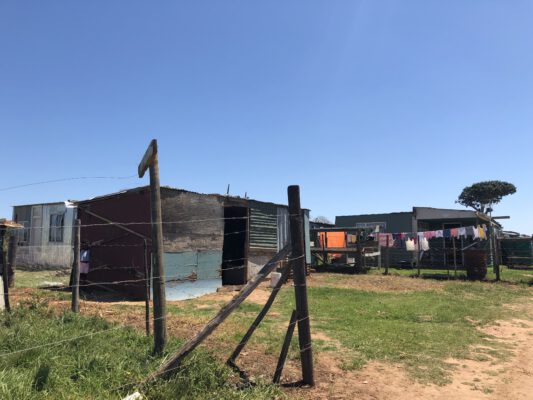
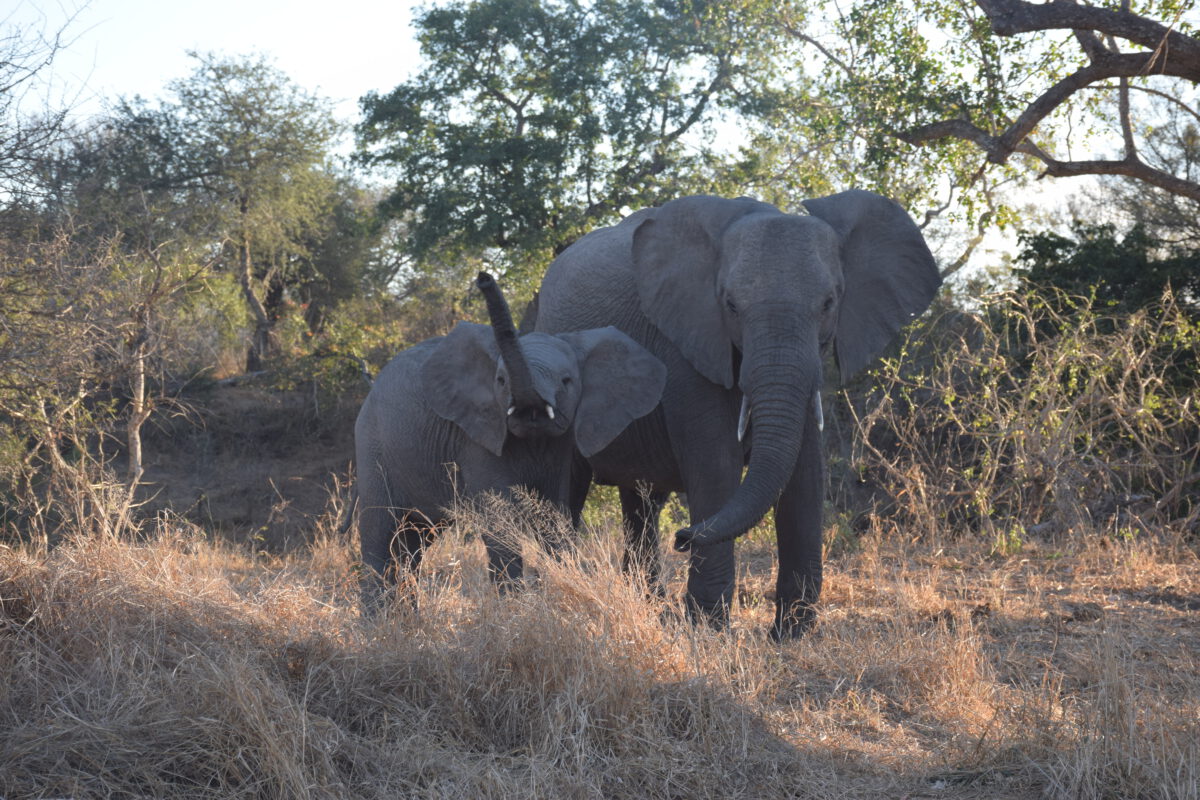
SOUTH AFRICA – ADVENTURES
South Africa is a treasure trove of adventure and excitement, with endless opportunities for thrilling experiences. Although it’s usually difficult to fit everything into a single trip due to time and budget constraints, there are always compelling reasons to return. From spectacular safaris and breathtaking hikes to shark cage diving and bungee jumping, the country has something for every type of adventurer. In the following sections, I’ll share some of my most exhilarating adventures and offer insights into what’s still on my wish list for future visits.
SAFARI BY JEEP/BOAT/FOOT
Having worked on a game lodge for two months, I can promise you that nothing compares to a guided safari. Sitting in an open vehicle, wind in your face, and enjoying a sundowner in the middle of the wild is the best adventure you can do in South Africa. There’s so much more to say about wildlife encounters—check out my ultimate safari experience here!
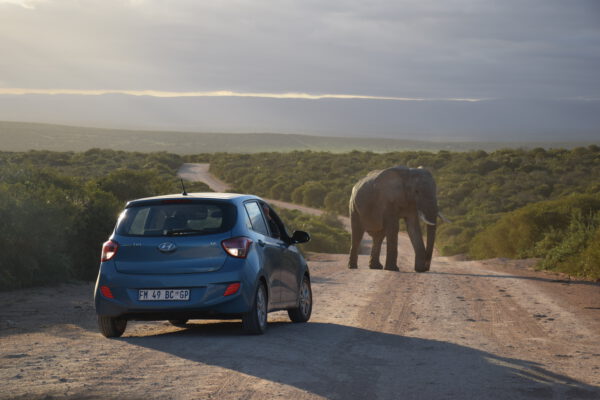
WHALE WATCHING
Whale watching in South Africa is a magical experience, with plenty of boat tours available. However, I discovered that you can often see them just as well from the coastline. Whether you’re on a rocky outcrop or strolling along the beach, luck plays a big role (but that’s all part of the adventure!). For my tips on the best whale-watching spots in South Africa, check out my guide here!
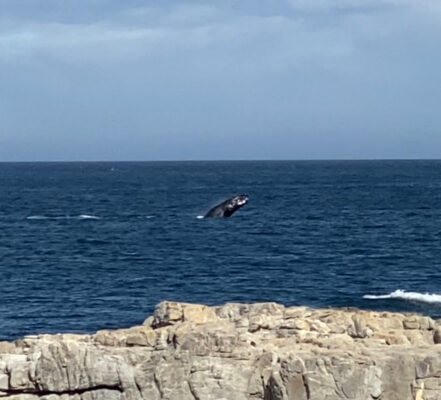
HIKE TO LIONS HEAD
I actually enjoyed hiking Lion’s Head even more than Table Mountain because the views are incredible—you get to see both Camps Bay and Table Mountain itself. Plus, the hike is more fun, with some sections that require real climbing, but it only takes about an hour to reach the top. It’s a perfect mix of adventure and stunning scenery!

HIKE TO TABLE MOUNTAIN
Hiking Table Mountain was one of the most rewarding experiences. The trail can be challenging, especially as you climb the steep rock steps, but the incredible views of Cape Town and the surrounding coastline make every step worth it. I chose the popular Platteklip Gorge route —find more details and alternative routes here.

SHARK CAGE DIVING
Shark cage diving in South Africa was one of the most exhilarating experiences I’ve ever had. Getting up close with copper sharks in the waters of Gansbaai was both terrifying and awe-inspiring, and it’s an adventure I’d highly recommend to any thrill-seeker.

PENGUIN ENCOUNTER
While Simon’s Town is the most popular spot for getting close to the penguins, I personally find that Betty’s Bay near Hermanus offers a much more enjoyable experience. It’s less crowded and touristy, allowing for a more relaxed encounter with the penguins. For my top recommendations on penguin encounters, check them out here!
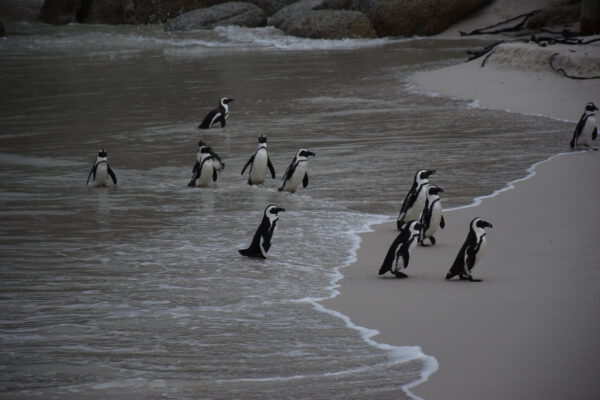
VISIT AN OSTRICH FARM
Visiting an ostrich farm in South Africa was much more fun than I expected! Standing on an ostrich egg to feel its surprising strength and receiving the “ostrich massage” were unique experiences. It was a delightful way to interact with these fascinating birds and learn more about them!
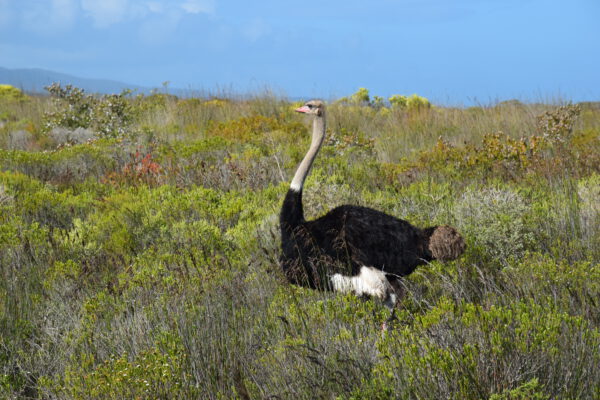
CANGO WILDLIFE RANCH
During my visit to the Cango Wildlife Ranch in South Africa, I had the unforgettable experience of getting up close with some incredible animals. One of the highlights was definitely spending time with the playful lemur monkeys, who were full of energy and curiosity. It was such a unique and special moment, connecting with animals in a way you don’t often get to.

CANGO CAVES
Visiting the caves in Oudtshoorn turned out to be an unexpectedly fun experience. We had to climb through narrow gaps and navigate tight passages, making it feel like an exciting expedition. The stunning rock formations and the thrill of squeezing through those spaces captivated me, turning this visit into a great memory.
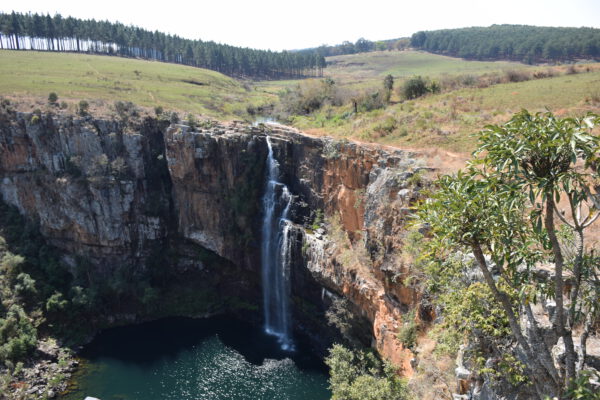
ZIPLINING IN TSITSIKAMMA
Soaring through the treetops of Tsitsikamma, with the lush forest and dramatic gorges below, was amazing. The rush of speeding across the lines while taking in the stunning views of the Garden Route was a great feeling of freedom.
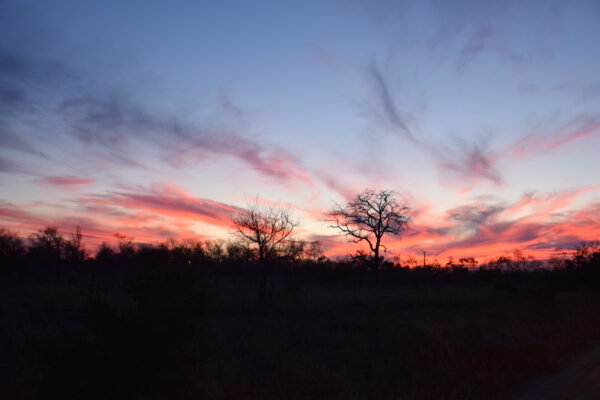
VISIT A CROCODILE FARM
When I visited a crocodile farm in South Africa, I was struck by their laziness, barely moving for most of the time. But seeing how insanely fast they can be when they want to was a shocking reminder of their power!
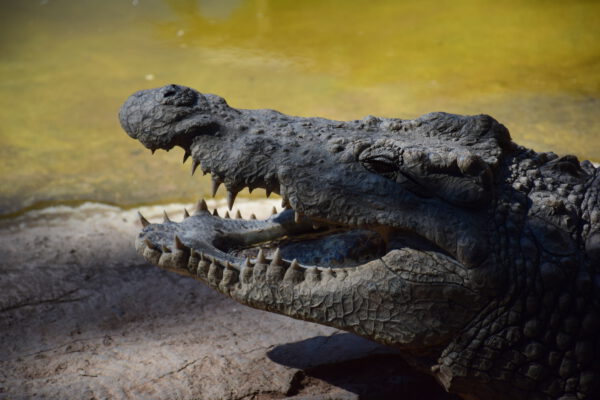
WINE TASTING
Whether you prefer a relaxed vineyard tour, an exciting ride on the Franschhoek Wine Tram, or a budget-friendly hop-on hop-off bus, you can enjoy some of the finest wines in stunning settings in South Africa. For more tips and details, check out my detailed wine tasting guide here!

Wish list for future visits:
At the top of my South Africa bucket list is horse riding in some of the country’s most beautiful landscapes. Especially at the Wild Coast, offering breathtaking beach rides along the rugged coastline. But, I’m also excited about the idea of exploring the Drakensberg Mountains on a multiple-day horseback ride, with its dramatic valleys and rivers. Lastly, riding through the vineyards of Stellenbosch sounds like a perfect combination of scenic beauty and wine tasting, making it a must-do for me!
With its stunning coastline and world-class waves, South Africa offers incredible surf spots for all skill levels. From the famous breaks at Jeffrey’s Bay, known for its long, right-hand point break, to the picturesque beaches of Muizenberg, there’s no shortage of options. I can already picture myself riding the waves with the breathtaking scenery around me.
Paragliding in South Africa is an exhilarating experience that’s definitely on my radar for my next trip! The breathtaking landscapes, from the stunning coastlines to the majestic mountains, provide the perfect backdrop for this thrilling adventure. Popular spots like Cape Town offer incredible take-off points, such as Lion’s Head, where you can soar high above the city and enjoy panoramic views of the ocean and Table Mountain. The feeling of gliding through the air, surrounded by such natural beauty, is something I can’t wait to experience. I’m excited to embrace the adrenaline and capture those unforgettable views from above!
On my next visit to South Africa, quad biking in the Atlantis Dunes is definitely at the top of my bucket list! The idea of zooming through vast, white sand dunes with Table Mountain in the distance is an adventure I can’t wait to experience. While Atlantis is my main focus, other incredible spots for quad biking include the Cederberg Mountains, where you can explore rugged terrain, and the Garden Route, with its lush forests and coastal trails.
The idea of abseiling down waterfalls, jumping into crystal-clear pools, and navigating rocky gorges sounds amazing. One of the top spots for canyoning is in the Kammanassie Gorge near the Garden Route, where you can experience stunning scenery while tackling thrilling water and rock challenges. There are also amazing opportunities for canyoning in the Storms River and Drakensberg Mountains.
Places like the Knysna Lagoon and the Cape Peninsula offer breathtaking scenery for kayaking in South Africa. Even though the water is quite cold, I know it would be an amazing experience, especially with the chance to spot seals and dolphins while paddling through the coastal lagoons and rivers.
While I am personally not too much into bungee jumping South Africa offers one of the most famous spots for bungee jumping in Bloukrans Bridge. It’s located along the Garden Route and is the highest commercial bungee jump in the world, standing at 216 meters (709 feet). Jumping off this bridge offers an incredible adrenaline rush with stunning views of the Bloukrans River below.
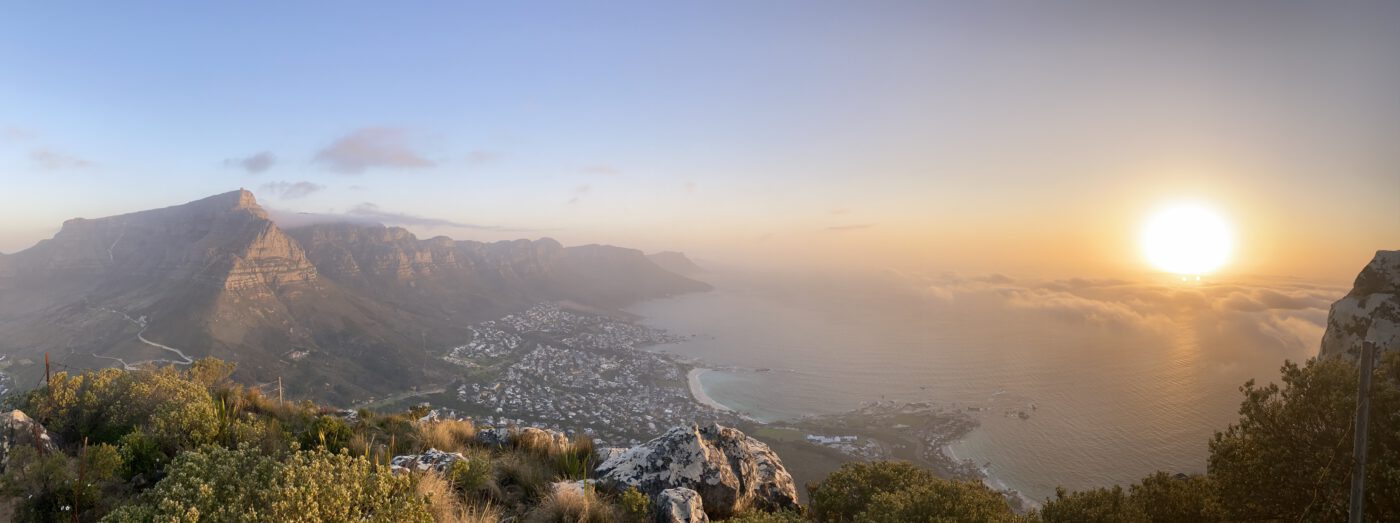
South Africa – Route
When planning a trip to South Africa, you usually begin your journey in one of three major cities: Cape Town, Johannesburg, or Port Elizabeth. Each starting point offers unique experiences, so your choice will depend on how much time you have and what you want to see. If you’re short on time (1-7 days), you might focus solely on Cape Town and its surroundings, which include iconic landmarks like Table Mountain and the Cape Peninsula. For those with more time (10-16 days), a road trip along the Garden Route is a fantastic option, showcasing breathtaking coastal views, charming towns, and opportunities for adventure. If you’re looking to explore even further, you can add an extra stop in Johannesburg and visit the famous Kruger National Park for an unforgettable safari experience (14-28 days).
If you have a week or less to spend in Cape Town, how you choose to spend your time is completely up to you. The options are virtually endless, allowing you to tailor your experience based on your interests and priorities. Whether you’re captivated by the vibrant cultural scene, breathtaking natural landscapes, or thrilling outdoor adventures, there’s something for everyone. Your budget will also influence your choices just as the season of your visit. Ultimately, your week in Cape Town can be a reflection of what excites you most, creating a memorable journey aligned with your unique travel style.
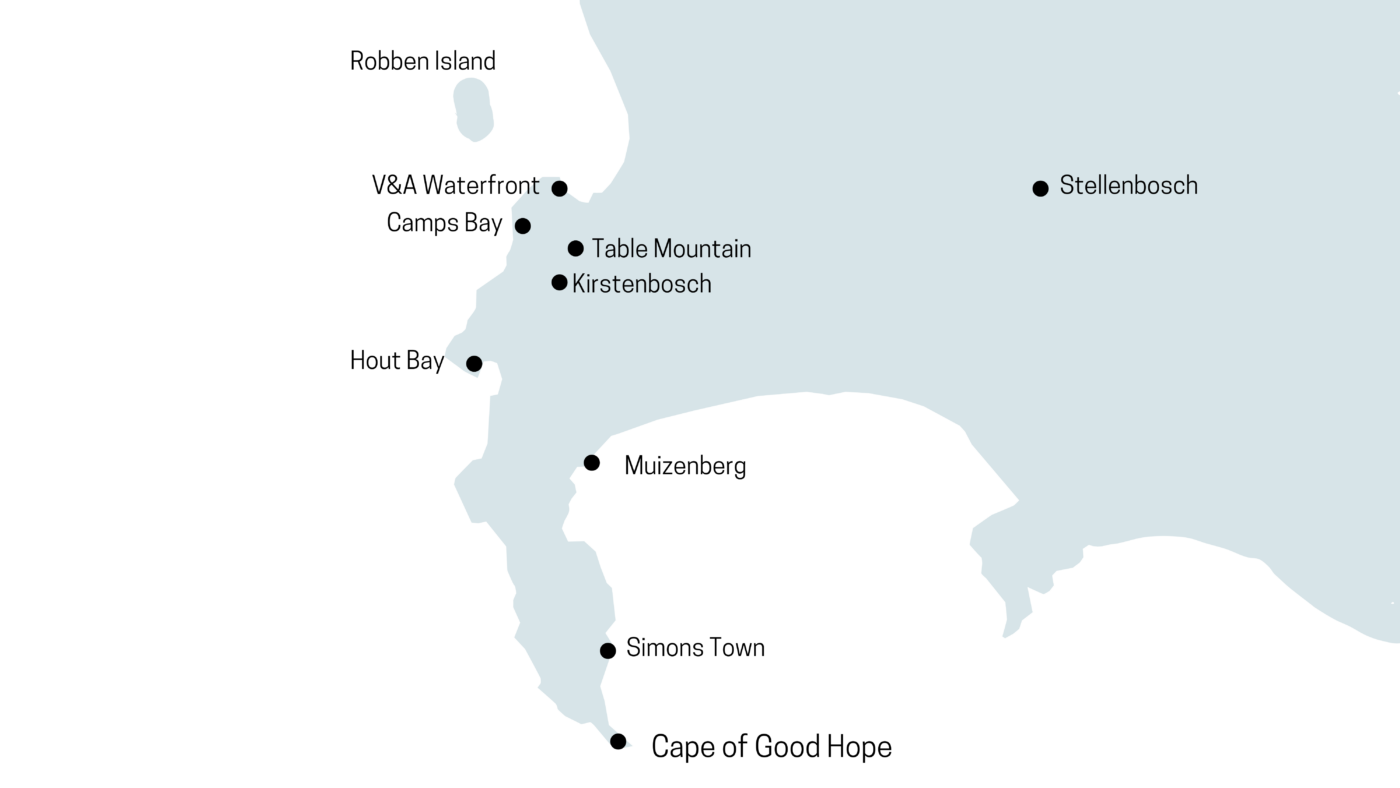
MY TOP RECOMMENDATIONS
- A Hop-on Hop-off Bus Tour is an excellent way to see the highlights of Cape Town in just a day. Given the lack of public transport options in the city, this bus service offers a convenient means to gain an overview of what Cape Town has to offer. There’s only one tour operator available, and I suggest starting your journey at the V&A Waterfront, where you can choose from three different bus routes. Attempting to cover all routes in a single day isn’t feasible, so it’s best to select just one. Additionally, keep in mind that you won’t be able to hop off at every stop, so prioritize the locations that matter most to you (typical stops include Kirstenbosch Botanical Garden, Bo-Kaap Quarter, Camps Bay, Houte Bay, Sea Point, Long Street…). The bus usually arrives every half hour, making it easy to plan your day. For my detailed recommendations on a one-day Hop-on Hop-off bus tour in Cape Town, be sure to check out my guide.
- The Cape Peninsula Tour is an essential experience when visiting Cape Town, offering a wonderful introduction to South Africa’s diverse landscapes. During the tour, you can admire the vibrant, colorful houses and watch surfers at Muizenberg, get up close to the charming penguins at Boulder’s Beach, and hike to the iconic Cape of Good Hope. Whether you choose to rent a car for a leisurely exploration at your own pace or opt for one of the many guided tours available is entirely up to you. However, I recommend renting a car, as it tends to be a more relaxed and often more budget-friendly choice, especially if you’re traveling with a group.
- Taking in the breathtaking views of the vibrant city of Cape Town from Table Mountain, Lion’s Head, or Signal Hill is a must-do on your itinerary. I highly recommend timing your visit for sunset, as the colorful sky enhances the experience, making it truly unforgettable. Depending on your fitness level and budget, each option offers a unique experience. Signal Hill is the easiest to access; you can simply take an Uber to the top, making it a convenient and budget-friendly choice. For those seeking a bit more adventure, Lion’s Head requires a good level of fitness, as it involves a 1 to 1.5-hour hike with no cable car option. The trail includes some fun climbing sections with ladders, but it’s not suitable for anyone afraid of heights. Lastly, Table Mountain is the most popular choice. You can either hike or take the cable car to the summit, with various hiking routes available that can take anywhere from 1 to 6 hours. Don’t forget to check out my complete guide to Table Mountain for more details.
- Immerse yourself in the vibrant culture of South Africa by exploring the V&A Waterfront and at least one of the local markets. Here, you’ll discover traditional South African handicrafts, unique souvenirs, lively dancing and singing, and delicious food. While most markets operate from Friday to Sunday, there are also options available during the week. For a detailed overview of local markets in Cape Town, check out my guide, which covers all your choices. Some of the standout markets include the Neighbourgoods Market, Hout Bay Market, Green Point Market, and Sea Point Market.
DEPENDING ON YOUR PERFERENCES AND SEASON
- Wine Tour: Embark on a wine tour through the stunning Cape Winelands, where you can sample exquisite local wines and enjoy picturesque vineyard landscapes.
- Whale Watching in Hermanus: Experience the breathtaking sight of southern right whales breaching in the waters off Hermanus, particularly during the annual migration season from June to December.
- Day Trip to West Coast National Park: Take a day trip to West Coast National Park, where you can explore beautiful coastal scenery, diverse wildlife, and vibrant wildflowers during the blooming season.
- 1-2 Day Safari Trip: Opt for a 1-2 day safari trip to nearby game reserves, where you can see the Big Five and immerse yourself in the breathtaking African wilderness.
- Free Walking Tour starting in Long Street or Bo-Kaap: Join a free walking tour starting from Long Street or the colorful Bo-Kaap neighborhood to discover Cape Town’s rich history, culture, and architecture.
- Kirstenbosch Botanical Garden: Visit Kirstenbosch Botanical Garden, one of the most beautiful gardens in the world, featuring a diverse collection of South African flora against the backdrop of Table Mountain.
- Robben Island: Take a ferry to Robben Island, where you can learn about South Africa’s history and the struggle against apartheid, including a guided tour of Nelson Mandela’s former prison.
- Museum: Explore one of Cape Town’s many museums, such as the South African Museum or the District Six Museum, to gain deeper insights into the country’s culture and history.
- Ostrich Farm: Visit an ostrich farm, where you can learn about these fascinating birds, interact with them, and even try riding an ostrich if you’re feeling adventurous!
- any of the other adventures listed above
You should plan at least ten days for the Garden Route to fully enjoy the stunning highlights along this journey from Cape Town to Port Elizabeth, or vice versa. The approximately 750-kilometer route along the N2 takes you through some of South Africa’s most beautiful and diverse landscapes, including charming coastal towns, endless beaches, dense forests, and majestic mountains. Along the way, you can explore picturesque spots like Knysna, Plettenberg Bay, and the Tsitsikamma National Park, giving you a taste of South Africa’s fascinating nature and culture. If you have more time, even better—14 to 16 days allow for a more relaxed trip, giving you the chance to discover even more hidden gems and highlights along the way.
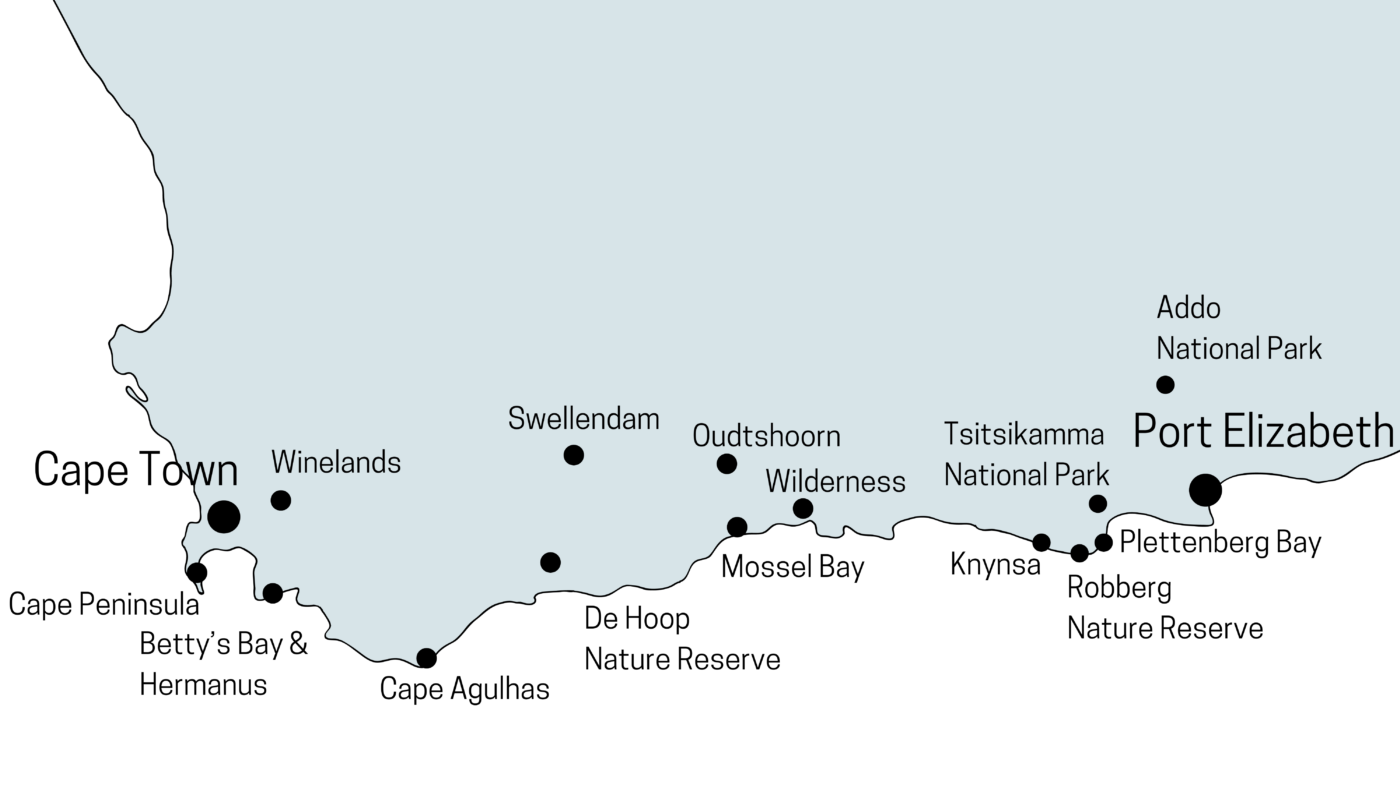
WHAT YOU SHOULD NOT MISS ALONG THE GARDEN ROUTE:
- Cape Town, known as the “Mother City,” boasts stunning landmarks like Table Mountain, vibrant neighborhoods, and the bustling V&A Waterfront, making it a perfect blend of natural beauty and rich culture.
- Cape Peninsula features the iconic Cape of Good Hope, where you can hike trails, spot diverse wildlife, and enjoy breathtaking coastal views, all while exploring charming seaside towns like Simon’s Town and Hout Bay.
- The Winelands are a paradise for wine enthusiasts eager to sample exceptional wines and enjoy gourmet dining experiences.
- Betty’s Bay hosts one of South Africa’s penguin colonies and is much less touristy than Boulders Beach, while nearby Hermanus, known as the “whale capital,” provides excellent opportunities for spotting marine wildlife.
- Cape Agulhas is the southernmost tip of Africa, where the Indian and Atlantic Oceans meet.
- De Hoop Nature Reserve is a coastal gem known for its sand dunes, diverse marine life, and the opportunity to spot southern right whales during the migration season.
- Swellendam, one of South Africa’s oldest towns, charms visitors with its well-preserved Cape Dutch architecture, lush surroundings, and proximity to the stunning Bontebok National Park.
- Oudtshoorn, known as the “Ostrich Capital of the World,” offers unique experiences like ostrich farm tours, unique Cango Caves, and a taste of the region’s rich history.
- Mossel Bay is famous for thrilling activities like shark cage diving and exploring the hiking trails of the nearby Garden Route National Park.
- In Wilderness the Indian Ocean meets golden sands. Also, the picturesque Wilderness National Park, which offers hiking trails, birdwatching, and opportunities for kayaking along the Touw River is a must-see.
- Knysna is known for its stunning lagoon, framed by the Knysna Heads, and its fresh oysters and vibrant arts scene.
- Robberg Nature Reserve features scenic hiking trails along rugged cliffs, where you can spot seals, dolphins, and even whales, while enjoying panoramic views of the Indian Ocean and pristine beaches.
- Plettenberg Bay is a picturesque coastal town famous for its golden beaches, vibrant marine life, and activities like whale watching, hiking, and exploring nearby nature reserves.
- Tsitsikamma National Park is a breathtaking coastal reserve known for its dense forests, dramatic cliffs, and the iconic Storms River suspension bridge, offering endless opportunities for hiking, kayaking, and adventure.
- Addo Elephant Park is a wildlife paradise, boasting an impressive population of African elephants along with lions, buffalo, and diverse wildlife, making it an exhilarating destination for unforgettable safari adventures!
- Port Elizabeth, often referred to as “PE” is a great gateway for wildlife adventures.
HOW TO PLAN YOUR TRIP
Planning your trip along the Garden Route can be an exciting adventure filled with stunning landscapes and unforgettable experiences. However, before planning your trip along the Garden Route, consider clarifying the following questions for yourself:
-
What are my travel dates? (Determine how much time you have to allocate for the trip, including travel days.)
-
What is my budget? (Outline how much you’re willing to spend on accommodations, activities, meals, and transportation.)
-
What are my must-see attractions? (Identify specific sights or experiences you don’t want to miss, such as national parks, beaches, or towns.)
-
What type of accommodation do I prefer? (Decide whether you’d rather stay in hotels, guesthouses, hostels, or campsites.)
-
What activities interest me? (Think about whether you prefer adventure activities (like hiking or zip-lining), cultural experiences, or relaxation.)
-
What is the best time of year to visit? (Research seasonal weather patterns, peak tourist seasons, and any events or festivals.)
-
Am I traveling solo, with family, or friends? (Consider how your travel companions’ preferences and needs may influence your itinerary.)
-
What is my level of physical activity? (Assess your fitness level and whether you’re comfortable with hikes, water sports, or other physically demanding activities.)
Reflecting on these questions can help you create a more tailored and enjoyable Garden Route experience! To gain insight into my personal journey along the Garden Route and discover recommendations, be sure to check out my article where I share my experiences and tips.
Whether you’re seeking adventure, relaxation, or cultural encounters, the Garden Route has something for everyone!
If you have more than two weeks to spend in South Africa, I highly recommend experiencing the Garden Route as mentioned earlier, and then taking a flight to Johannesburg. From there, you can delve into the vibrant life of South Africa’s largest city and enjoy additional wildlife encounters in the renowned Kruger National Park.
WHAT YOU SHOULD NOT MISS ALONG THE GARDEN ROUTE:
- Cape Town, known as the “Mother City,” boasts stunning landmarks like Table Mountain, vibrant neighborhoods, and the bustling V&A Waterfront, making it a perfect blend of natural beauty and rich culture.
- Cape Peninsula features the iconic Cape of Good Hope, where you can hike trails, spot diverse wildlife, and enjoy breathtaking coastal views, all while exploring charming seaside towns like Simon’s Town and Hout Bay.
- The Winelands are a paradise for wine enthusiasts eager to sample exceptional wines and enjoy gourmet dining experiences.
- Betty’s Bay hosts one of South Africa’s penguin colonies and is much less touristy than Boulders Beach, while nearby Hermanus, known as the “whale capital,” provides excellent opportunities for spotting marine wildlife.
- Cape Agulhas is the southernmost tip of Africa, where the Indian and Atlantic Oceans meet.
- De Hoop Nature Reserve is a coastal gem known for its sand dunes, diverse marine life, and the opportunity to spot southern right whales during the migration season.
- Swellendam, one of South Africa’s oldest towns, charms visitors with its well-preserved Cape Dutch architecture, lush surroundings, and proximity to the stunning Bontebok National Park.
- Oudtshoorn, known as the “Ostrich Capital of the World,” offers unique experiences like ostrich farm tours, unique Cango Caves, and a taste of the region’s rich history.
- Mossel Bay is famous for thrilling activities like shark cage diving and exploring the hiking trails of the nearby Garden Route National Park.
- In Wilderness the Indian Ocean meets golden sands. Also, the picturesque Wilderness National Park, which offers hiking trails, birdwatching, and opportunities for kayaking along the Touw River is a must-see.
- Knysna is known for its stunning lagoon, framed by the Knysna Heads, and its fresh oysters and vibrant arts scene.
- Robberg Nature Reserve features scenic hiking trails along rugged cliffs, where you can spot seals, dolphins, and even whales, while enjoying panoramic views of the Indian Ocean and pristine beaches.
- Plettenberg Bay is a picturesque coastal town famous for its golden beaches, vibrant marine life, and activities like whale watching, hiking, and exploring nearby nature reserves.
- Tsitsikamma National Park is a breathtaking coastal reserve known for its dense forests, dramatic cliffs, and the iconic Storms River suspension bridge, offering endless opportunities for hiking, kayaking, and adventure.
- Addo Elephant Park is a wildlife paradise, boasting an impressive population of African elephants along with lions, buffalo, and diverse wildlife, making it an exhilarating destination for unforgettable safari adventures!
- Port Elizabeth, often referred to as “PE” is a great gateway for wildlife adventures.
CONTINUING FROM JO’BURG
- Jo’burg or Jozi, is South Africa’s largest city and a vibrant hub of culture and history. You can explore the Apartheid Museum to gain insight into the country’s past, or take a stroll through Soweto, where you can visit the iconic Vilakazi Street, home to both Nelson Mandela and Desmond Tutu. For art enthusiasts, the Maboneng Precinct offers a lively mix of galleries, street art, and trendy cafes. If you’re looking for a bit of nature, the Johannesburg Botanical Garden provides a peaceful escape amidst the urban bustle. With its rich heritage and dynamic atmosphere, Jo’burg is a city that invites exploration and discovery. However, I recommend spending a maximum of three days there.
- Kruger National Park is located about a 4.5-hour drive from Johannesburg and is a prime destination for experiencing South Africa’s incredible wildlife, including the famed Big Five. I highly recommend booking a stay at a private game reserve for at least one night. While it may be on the pricier side, the experience is undeniably worth it; you’ll enjoy extraordinary wildlife encounters, benefit from knowledgeable guides, and relish the unique sense of freedom as you traverse the park in a jeep. Additionally, don’t miss the chance to do some game spotting in Kruger National Park with your own vehicle. It’s a thrilling adventure, and you might just get lucky with some incredible sightings!
- Before heading back to Jo’burg, you should plan a visit to Graskop and Blyde River Canyon. Graskop is a charming town known for its stunning views and proximity to the breathtaking Blyde River Canyon, one of the largest canyons in the world. Take time to explore the scenic viewpoints, such as God’s Window and Bourke’s Luck Potholes, where the dramatic landscapes will leave you in awe. The area offers various hiking trails that cater to different fitness levels, allowing you to immerse yourself in the region’s natural beauty. Don’t forget to indulge in some local delicacies at the town’s eateries before you set off on your journey back to Johannesburg.

SOUTH AFRICA – FOOD
During my first trip, prior to becoming a vegetarian, I tried many traditional meat dishes. My absolute favorite was biltong—a dried, cured meat typically made from beef or game, marinated in vinegar and spiced with coriander, pepper, and salt. It’s like beef jerky, but with a more intense and satisfying flavor. Whether you pick it up at a market or enjoy it while on a safari, biltong is an iconic snack that’s impossible to resist.
Another standout is boerewors, a classic South African sausage made from beef and pork. Boerewors is usually cooked over a braai (barbecue), with its rich spices and herbs infusing the meat with deep flavor. Served alongside pap or in a bun like a hot dog, it’s a must-try for any meat lover. I also fell in love with Bobotie, a comforting dish made from spiced minced meat, baked with an egg custard topping. The mix of mild curry flavors, raisins, and a touch of sweetness makes bobotie truly unique.
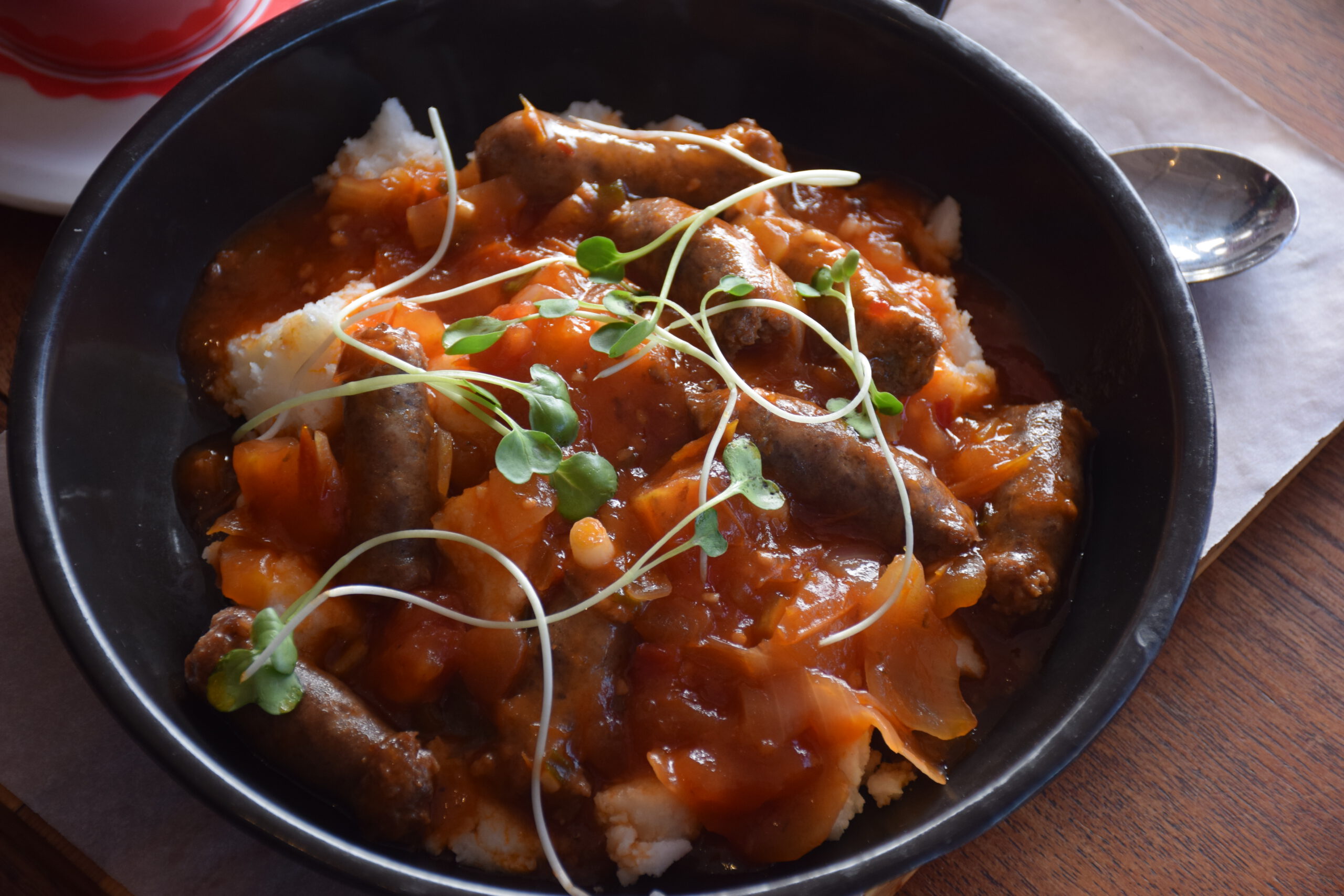
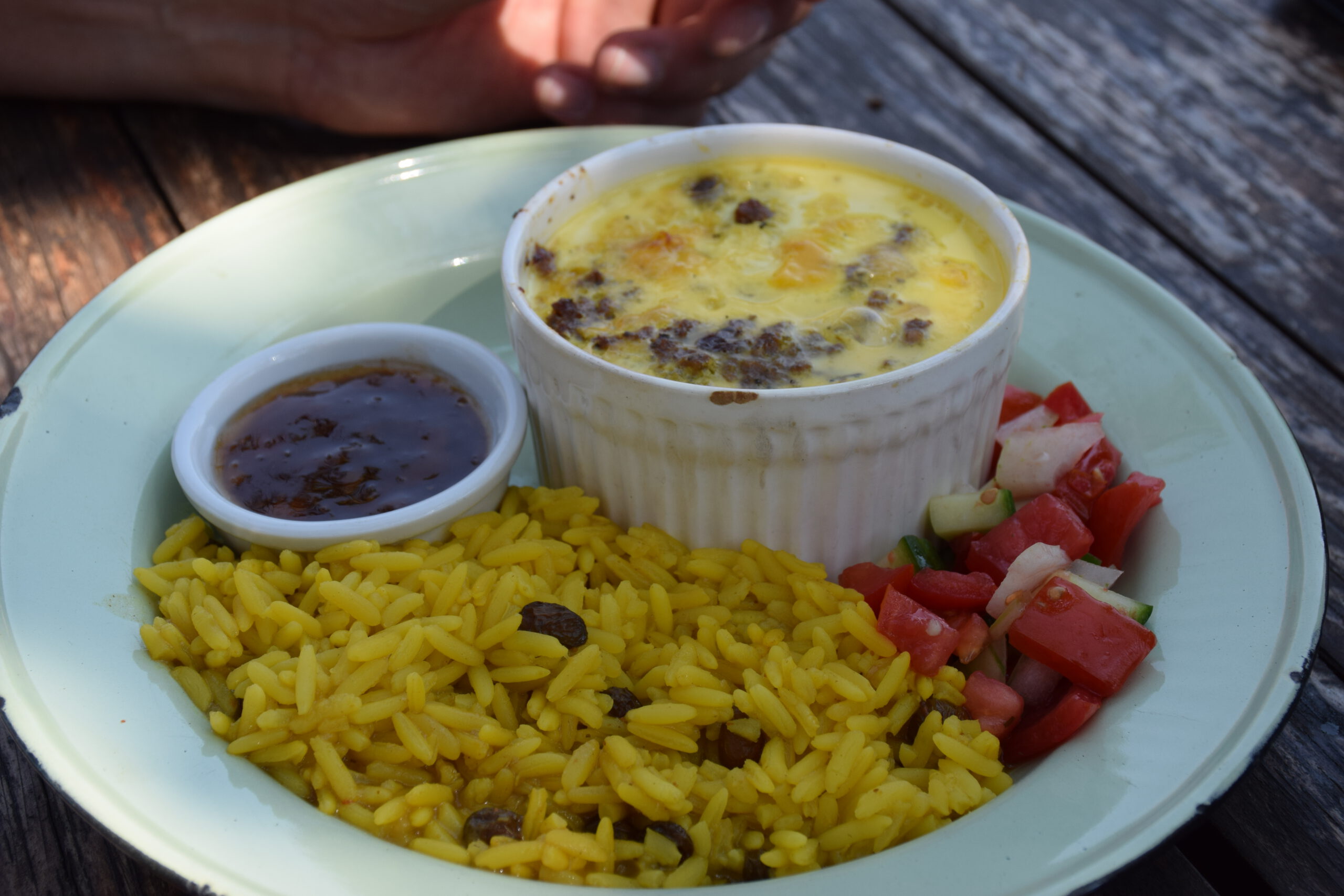
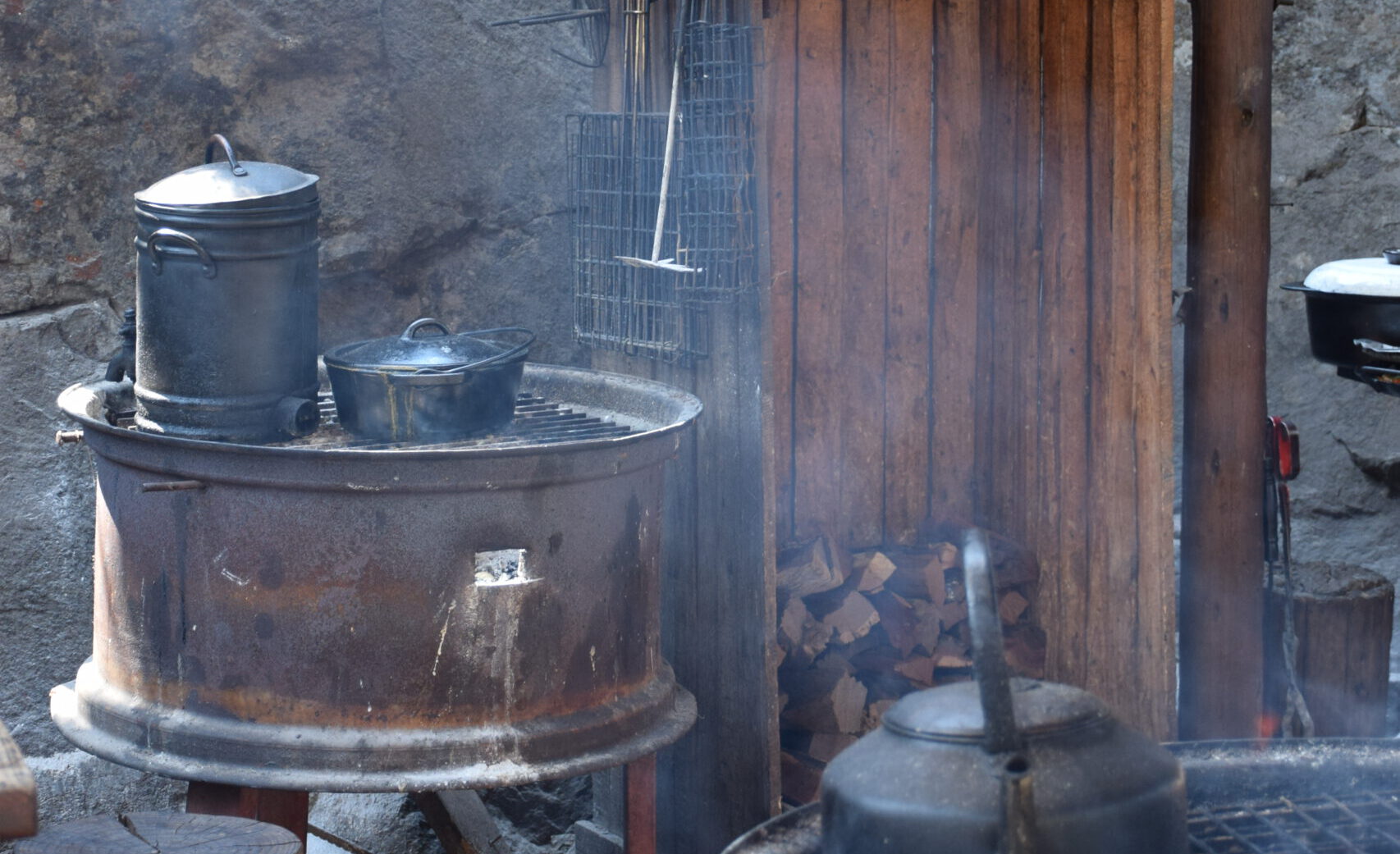
After returning to South Africa as a vegetarian, I discovered the depth of flavor in its plant-based dishes. Chakalaka quickly became a favorite—this spicy relish made from onions, tomatoes, carrots, and beans is bursting with flavor and heat. Paired with pap, the traditional maize porridge, it’s a comforting and hearty meal that feels incredibly authentic. It’s even better when eaten the traditional way—by hand—which adds a layer of connection to the local food culture.
Another dish I can’t get enough of is Vetkoek, literally translating to “fat cake.” These fluffy fried dough balls can be filled with savory mince or enjoyed with sweet toppings like syrup or jam. As a vegetarian, I prefer them with a simple jam filling or served on the side with my pap and chakalaka.
From hearty meat dishes to vegetarian delights, South Africa’s food is a reflection of its diverse culture and history. If you’re keen to try any of these dishes, I’ve shared some of my favorite recipes below. But honestly, nothing compares to tasting them in South Africa itself, where the flavors come alive in ways that are impossible to replicate at home!
PAP
Pap is a traditional South African dish made from maize meal, similar to polenta. It’s a staple in many households, often served as a side dish to complement chakalaka for example. Its simple, comforting flavor makes it a versatile and essential part of South African cuisine.
Jump to RecipeVETKOEK
Vetkoek is a traditional South African dish, similar to a fried dough bread. It’s either filled with savory options or served with sweet toppings like jam and syrup. Crispy on the outside and soft on the inside, vetkoek is a favorite street food and a must-try for anyone visiting South Africa!
Jump to recipe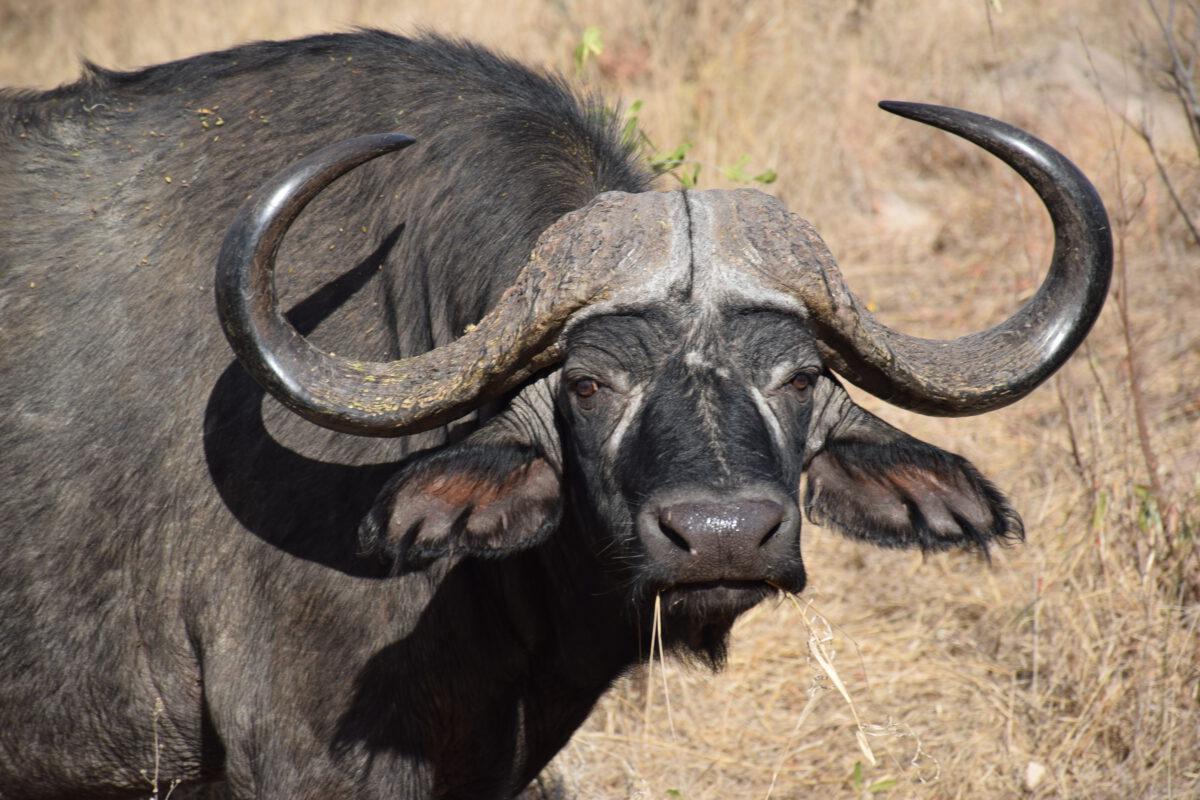
FINAL THOUGHTS ON SOUTH AFRICA
When I think of South Africa, the words that immediately come to mind are diversity, animals, and colorful. The country offers an incredible variety of landscapes, from turquoise lagoons and towering mountains to vast oceans, rolling dunes, and charming small villages alongside bustling townships. Every day felt like a new adventure, with unforgettable animal encounters—from the Big Five on safari to the graceful birds, whales, dolphins, seals, and even playful penguins along the coast. Beyond the wildlife, South Africa’s rich, colorful cultures left a lasting impression. Children joyfully perform their traditional dances and songs on the streets, and the vibrant handcrafted souvenirs reflect the pride and artistry of local communities. What stood out the most, though, were the incredibly warm and friendly people, always greeting you with a smile and a cheerful, “Hello, how are you doing?” South Africa is a place where diversity truly shines in both its landscapes and its people.

